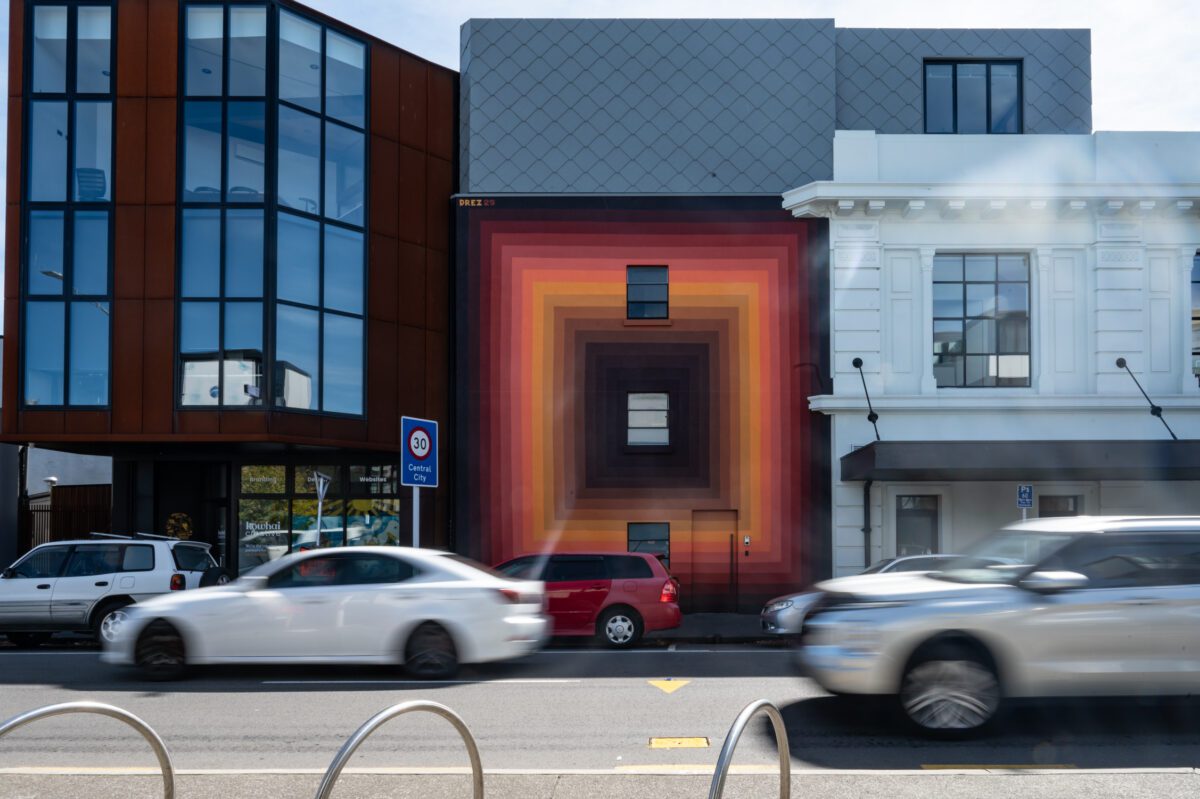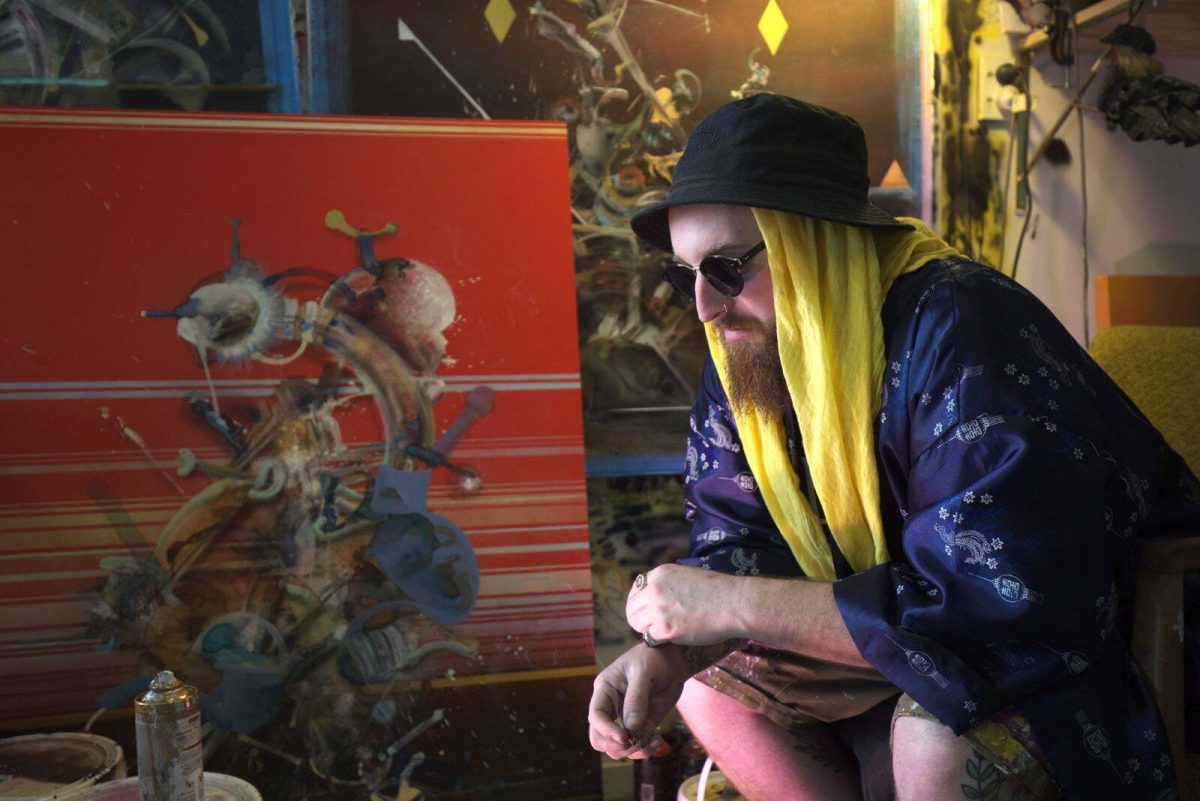Good things take time – that’s what they say, anyway. It’s hard to believe that it was mid-March when we sat down with Melbourne artist Drez to reflect on his whirlwind visit to Ōtautahi for the Flare Street Art Festival, where does the time go? With a lot going on, it has taken us a while to finally publish our conversation (conducted in a car in Phillipstown just before Drez departed for the airport!), but we know it is worth the wait! After getting to know Drez as he painted his striking mural on St Asaph Street, it was a privilege to take the chance to dive a bit deeper into his practice, his influences and the comparative cultural and historic landscapes of Aotearoa and Australia. A thoughtful and reflective presence, Drez reveals the importance that he places on his work’s ability to engage its audience through colour and form, eliciting a direct connection between art and experience…
Continue reading “Chromatic Oscillations – An Interview with Drez”Tag: mural art
Postcard from Sydney, Australia
Sydney is a big city. You can feel it when you arrive, and especially when you explore the central city. The buildings are impressive, the sprawl is wide and the energy is palpable. Sydney might not be held in the same regard as Melbourne in terms of street art reputation, but it undeniably still has a significant part in the history of Australian urban art culture. Earlier this year, we took a relaxing weekend in Sydney, exploring various parts of the city on foot and via train – taking in graffiti, murals, interventions and more. Below is a selection of some of our favourite finds, including some Fintan Magee, a brand new DANK (painted the first day we arrived at Pro Art Supplies), Thierry Noir and Jeremy Novy and a heap of local talent…
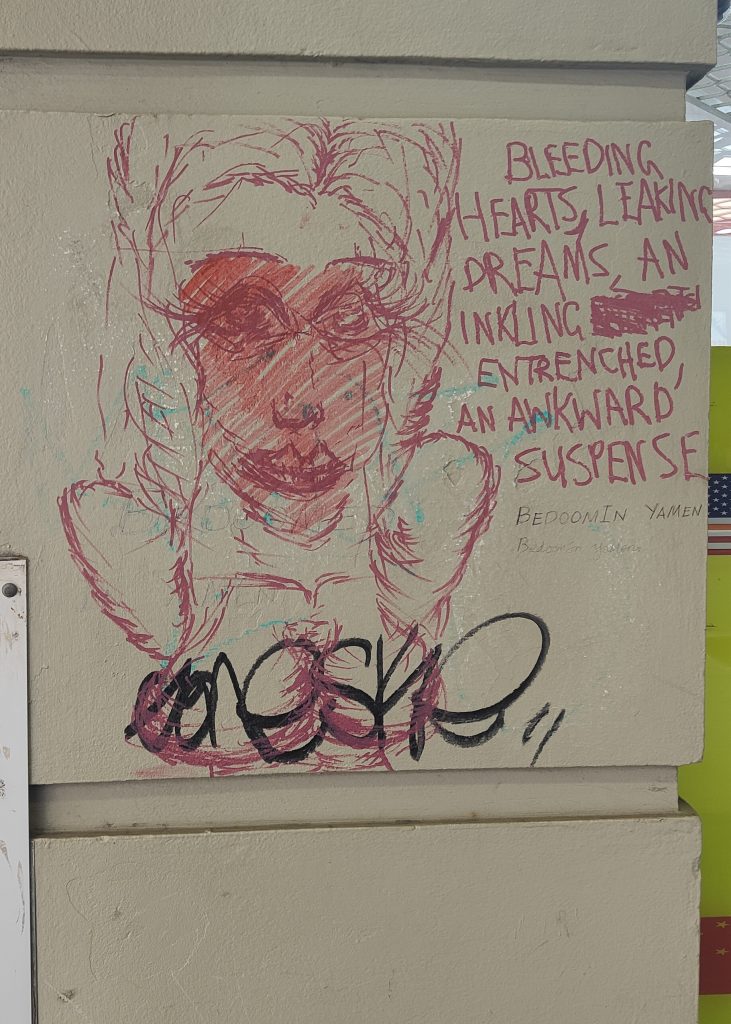
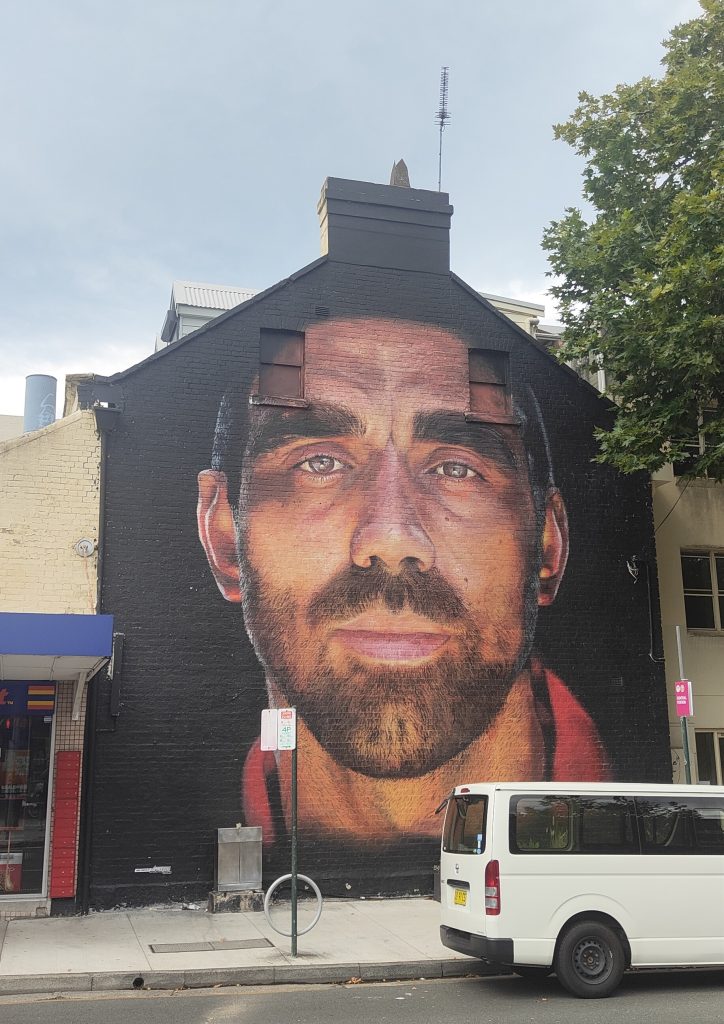
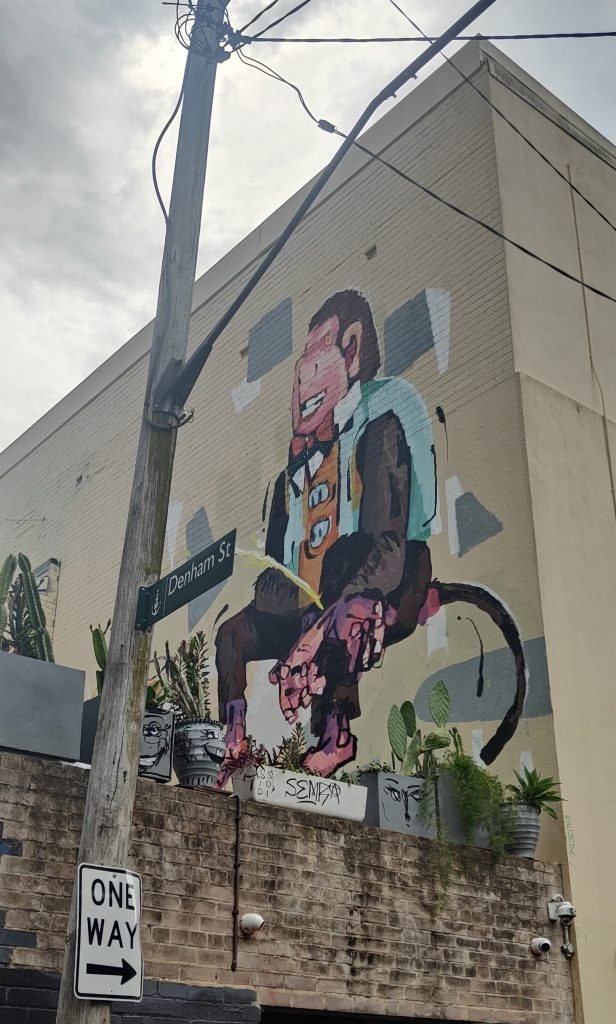
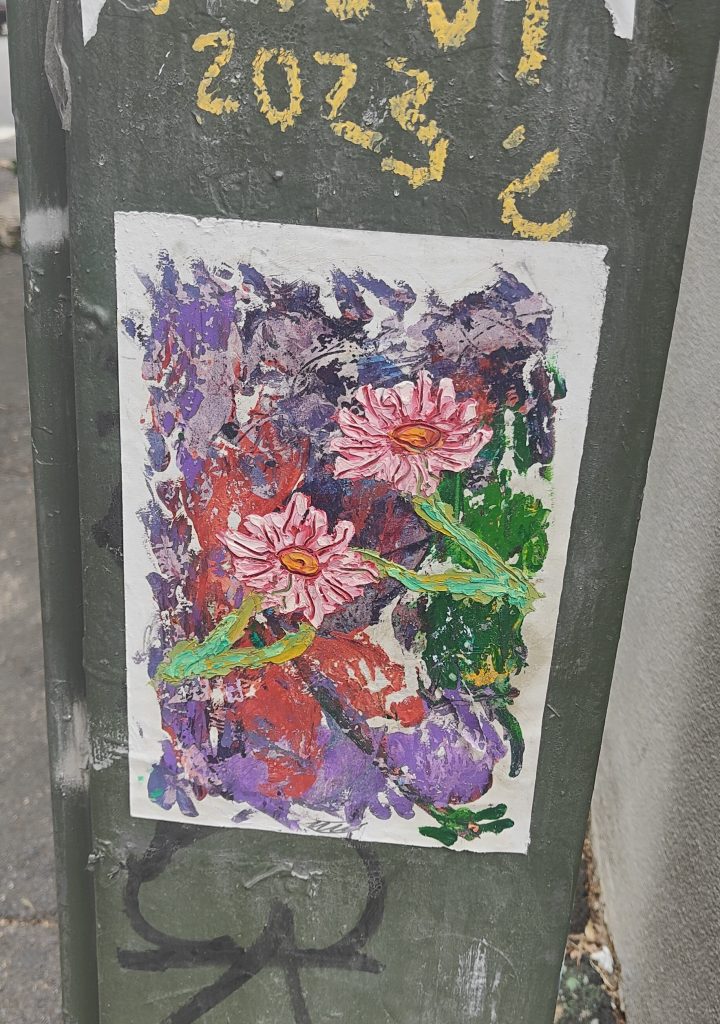
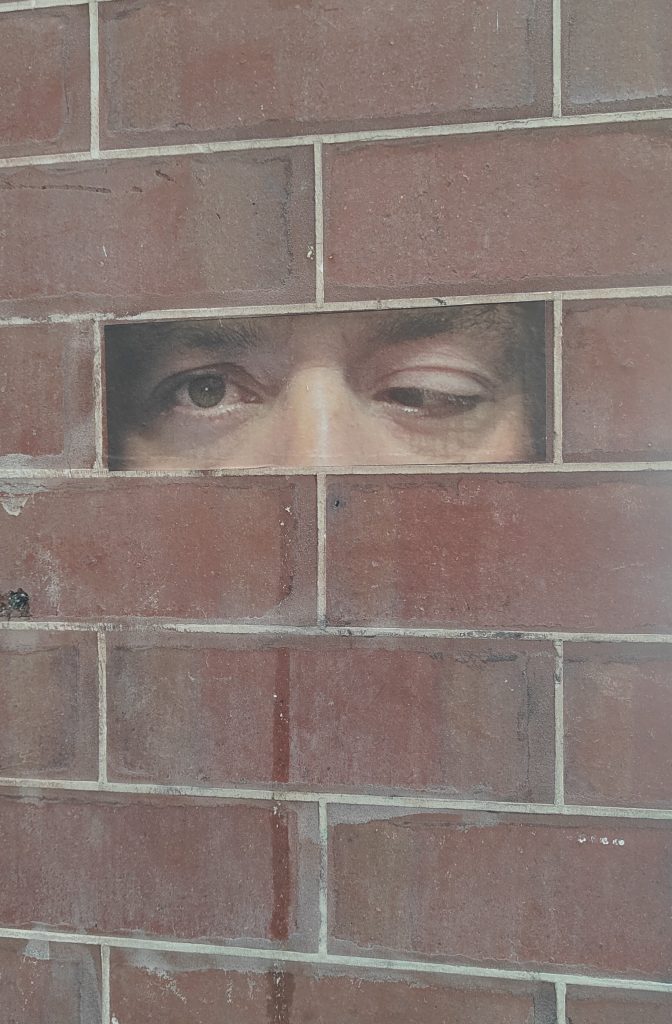
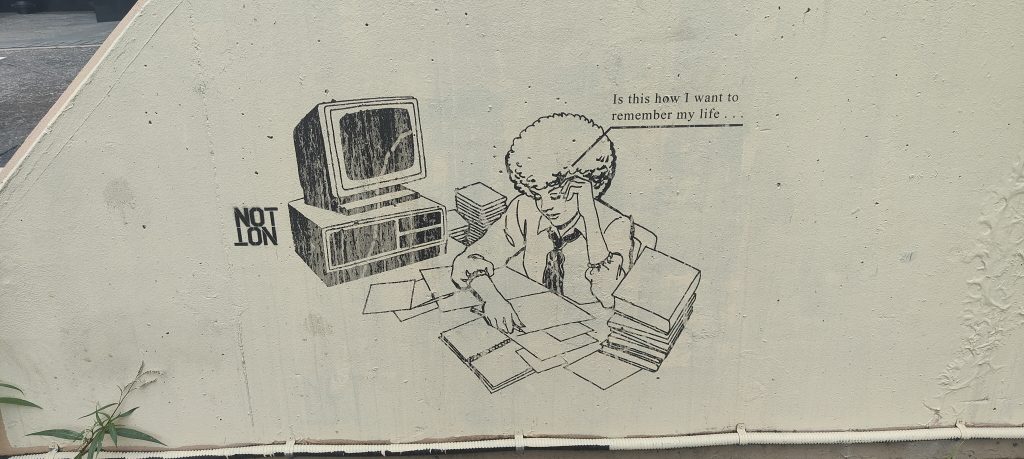
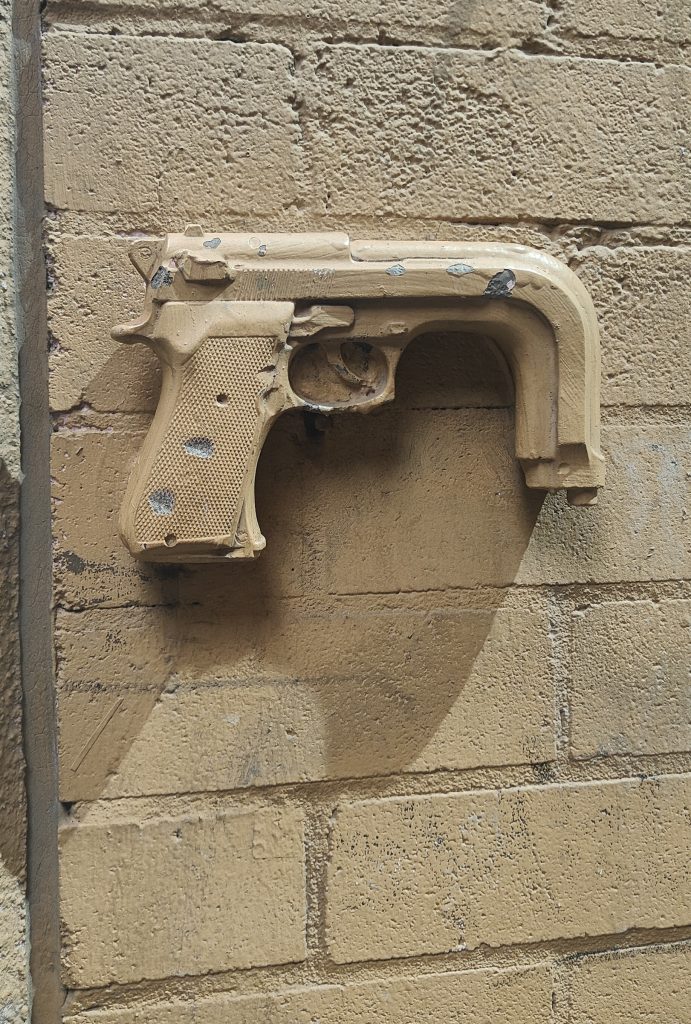
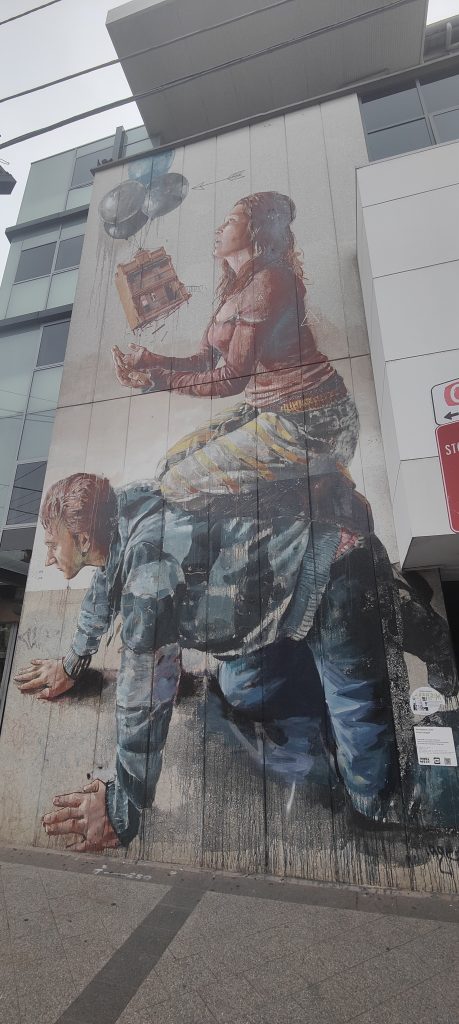
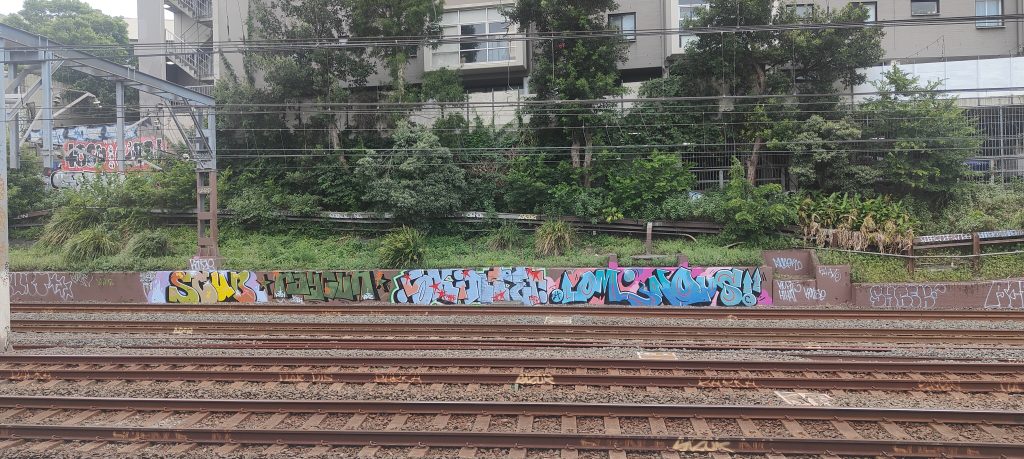
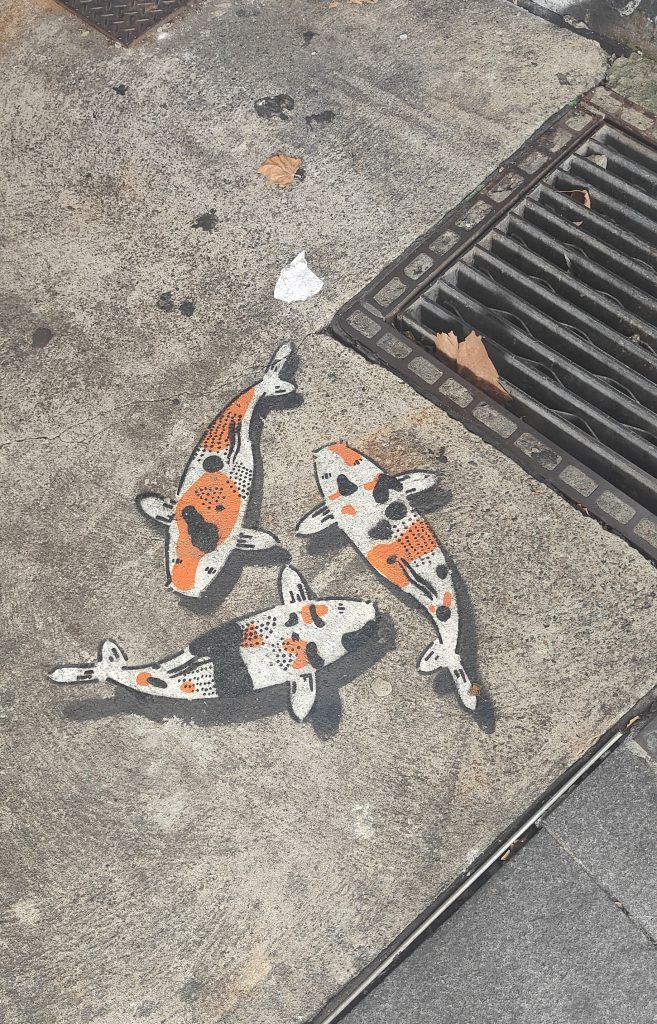
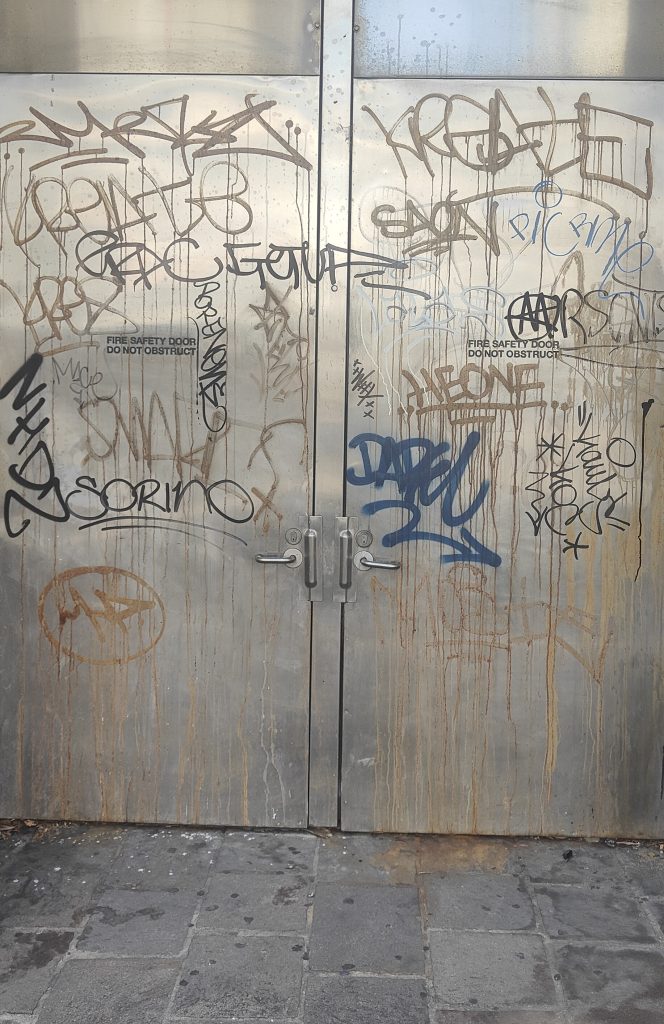
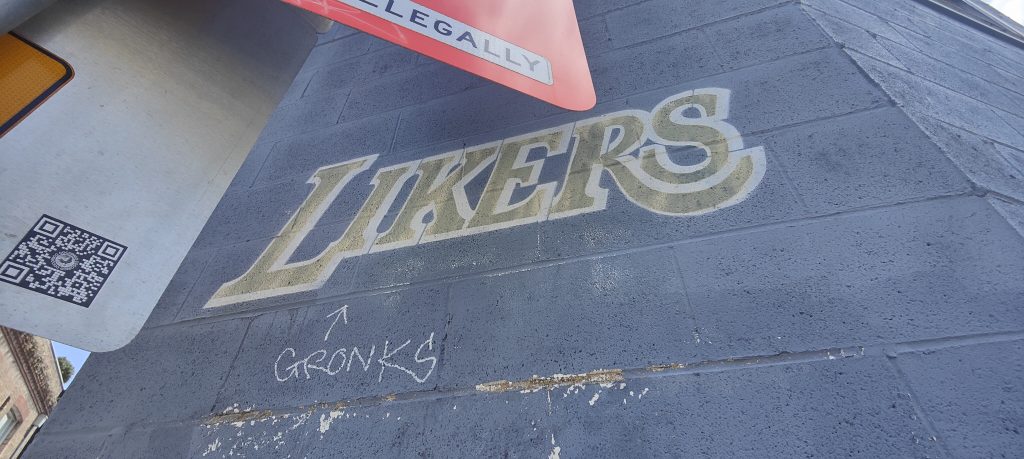
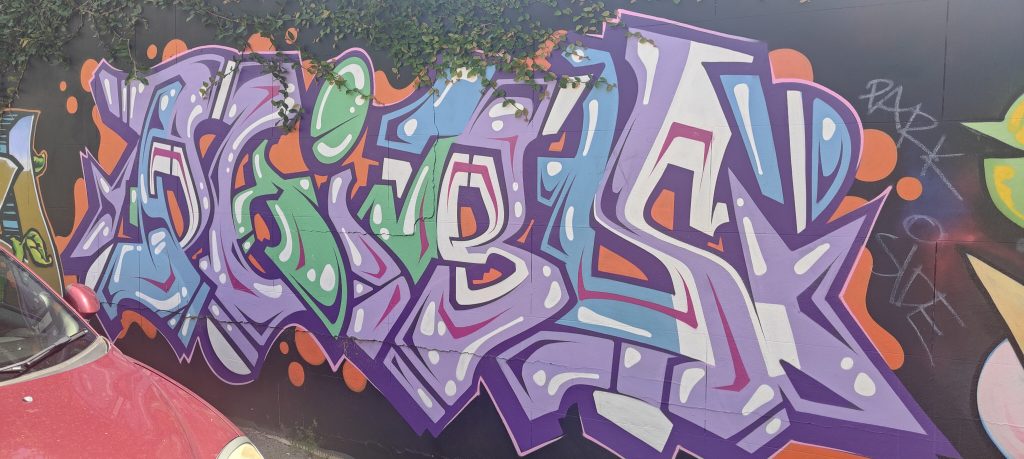
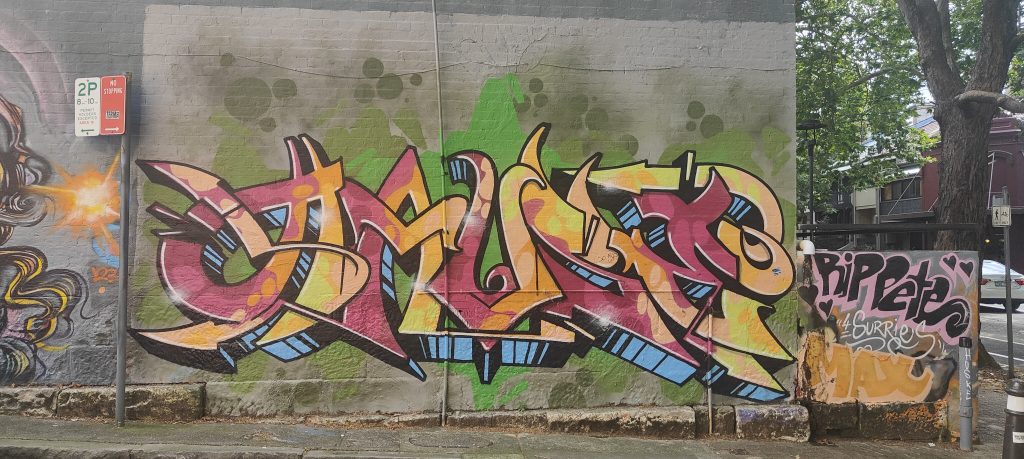
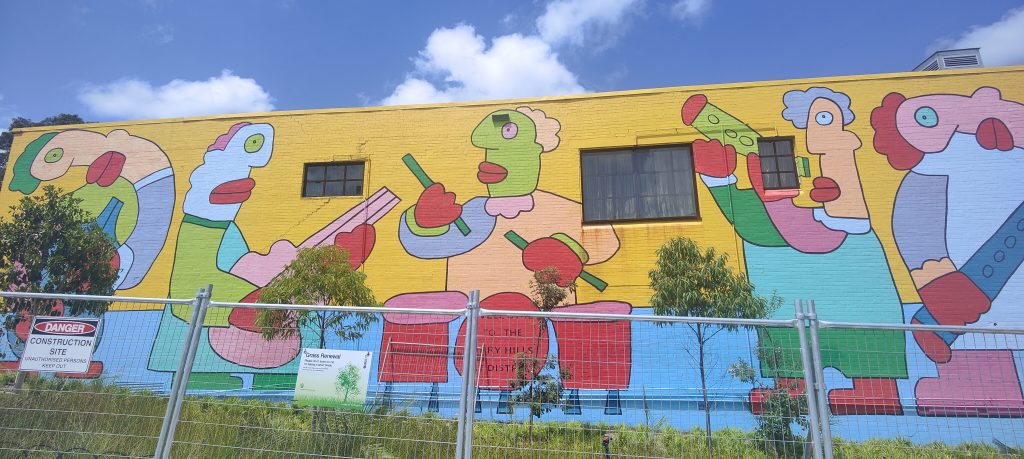
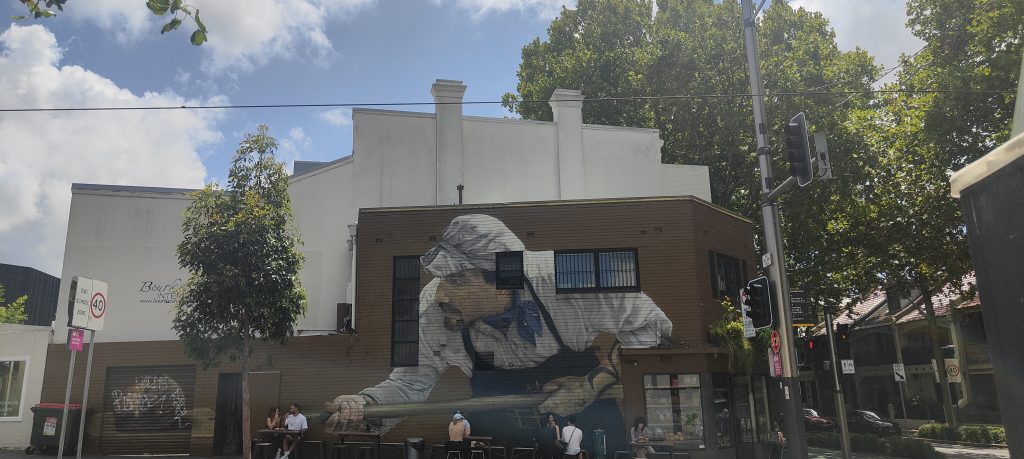
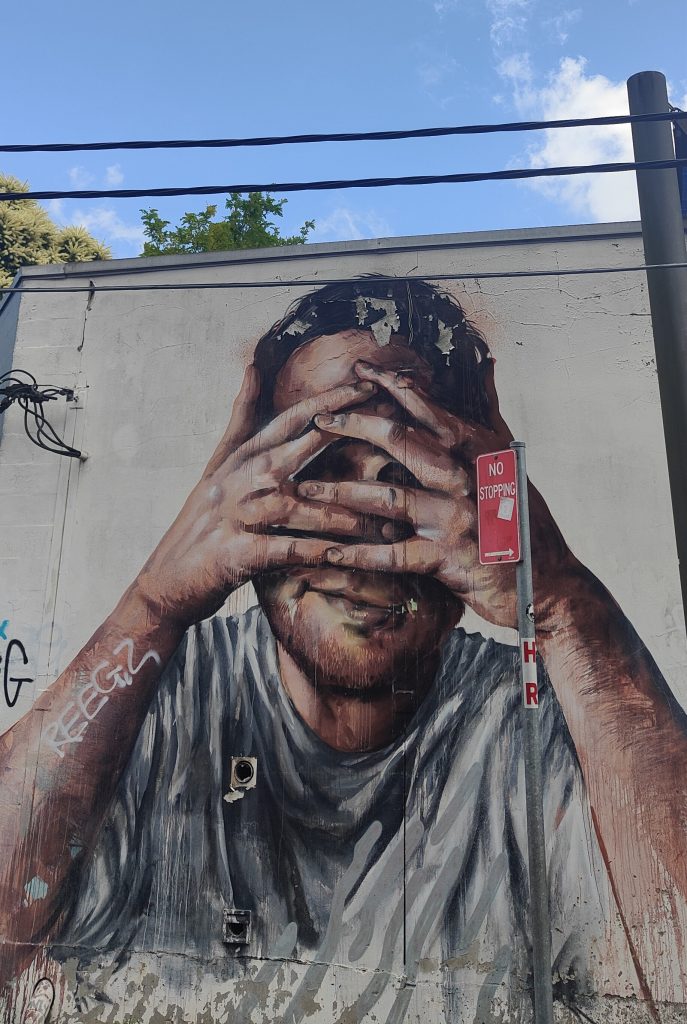
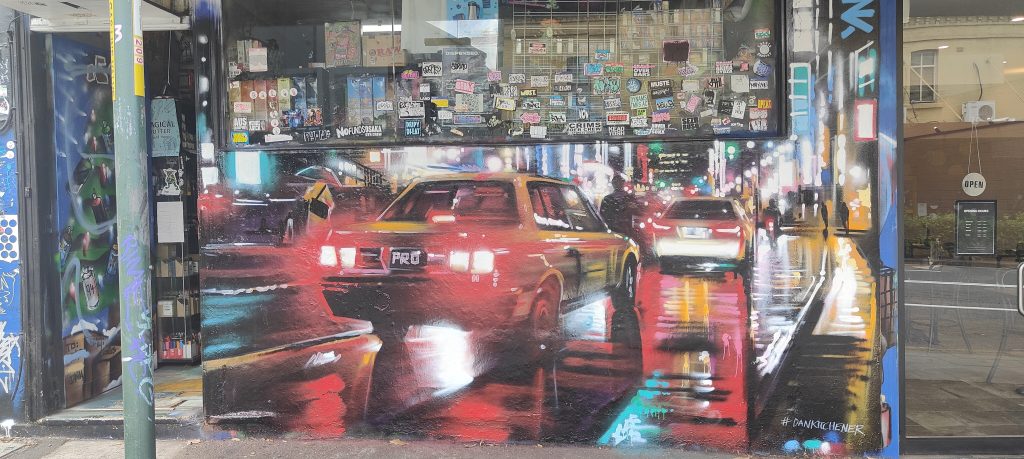
Cracked Ink – The Character (Part Two)
We pick up with the second part of our interview with Cracked Ink immediately where we left off, discussing the artist’s entrance into the festival scene and how it necessitated a different approach to his work. For Cracked Ink, his character-based creations have unlimited narrative potential, dancing their way across walls, their interactions place them as story tellers. Jump back into our conversation with Cracked Ink as he reflects on the importance of knowing your worth, the role of social media, and the balancing act of an artistic career…
____________________________________________
As you started doing events and festivals like Sea Walls, did it make you think more about the process of creating murals? A lot of artists coming up now, they are almost immediately thinking of large-scale muralism, but that hasn’t always been the case, that transition for writers and for character-based artists or artists who were working in that post-graffiti style, muralism wasn’t necessarily the end goal…
It certainly became more narrative driven, which was actually really good for me, it made me look at my own work. The Sea Walls stuff, it’s all about ocean conservation, which allowed me to start to drill into different narratives. Is it just a visual that people want to see, or a story? It really made me look at my stuff and ask how can I push it in different directions and use different narratives? It was a kick in the ass for me a little bit, it got me thinking again. I started off with good intentions of trying to do something with content, but sometimes you drift off into this little abyss and you forget what it was all about. So that really helped me to re-centre and rethink my own game and what I was doing. From my perspective, these days new people are coming into it from different worlds, which is totally cool and amazing, there are talented artists coming into this world of muralism and stuff, but they didn’t necessarily get the opportunity to grow up the way I got into it, which is going out and painting. I don’t think it is right, I don’t think it’s wrong…
It’s just different.
I think it’s just the way life is. The trajectory of these things, the whole thing has changed.
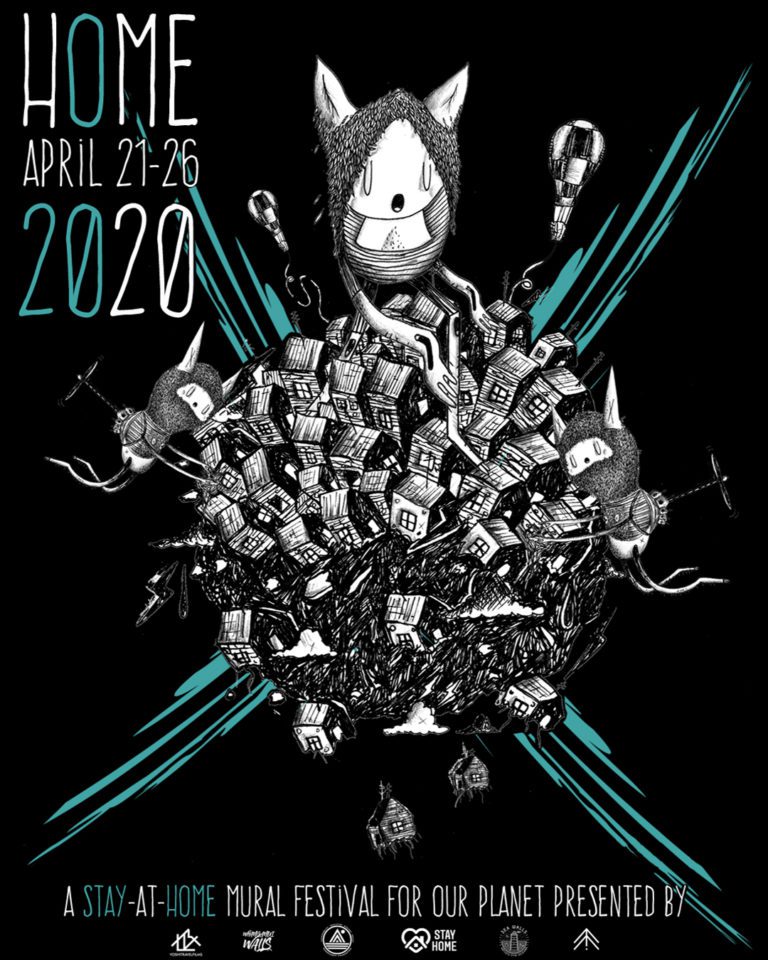
It will be interesting to look back and see the direction of muralism under these new influences. Askew made a similar point recently about how the motivations for graffiti are completely different now that young people have more platforms to express themselves. It used to be that you felt invisible and graffiti was a way to be seen, now you can post selfies 400 times a day on Instagram. That doesn’t mean graffiti becomes futile or pointless, it just means that the motivations have changed.
It’s interesting the whole dynamic with social media. As it has picked up speed over the past five years, it has changed so much. When I first signed up for all this social media stuff it was exciting, because it was about getting your work out there. But it quickly became a bit of a drain, just that whole thing of checking my phone and going through it all. I mean it is an amazing tool to share your work and for people to follow it and catch up on what you’re doing, but that need for likes and follows can make it tough to navigate…
I sometimes think it has the potential to take people away from the primary act of making and doing. You get the feeling for some people, understanding and manipulating algorithms of social media becomes the drive, rather than celebrating the work, it feels less organic. That original power of allowing people to put things in the world, empowering people, it feels like it is now overshadowed by the commercial potential of it all…
I feel sorry for the guys and girls growing up on these platforms. I feel like the purpose of why you do your art, it should always be for yourself. It should never be for someone else, the purpose of being creative and doing art is for you. It’s that outlet of yourself. When you start trying to please other people, it changes. You should be doing it for yourself, and from that people are going to like it, people are going to dislike it, but that shouldn’t change what you do. That’s a big thing that I have stuck to, I always do it for my own reasons. If other people like it, then happy days. If they don’t, that’s not my problem. I’ve always had that attitude. Once you put it onto that platform, whether people are hating it or people are loving it, you have no control over that, it shouldn’t be a focus. Creativity has never been about that.
Once you start fishing for things it becomes problematic because you start listening to an audience rather than building an audience. That’s another issue with the likes of Instagram, we are exposed to styles and trends and we start thinking about how to jump on them. In the past, it was more localised, the engagement was more real and immediate, it didn’t seem so curated. But it also meant that you were influenced by what worked in your surrounding environment. Speaking of local environments, you established the Whanganui Walls event in your hometown a few years ago, what was the inspiration to start your own festival?
Being part of the scene for 20 years and being part of so many festivals, I found it had a really interesting dynamic. When I first started, the chance of painting a big wall was kind of the ultimate goal, and with festivals you would get to paint what you want, generally. Over the years, seeing and being a part of these events, the major thing that I noticed was the amount of stuff that a city was getting and the artists were willing to go and do it for free. It is tricky because when we initially started painting, we’d go and paint stuff in the street, because that’s your zone, that’s your place, you want to be there. But there is a difference between painting a festival and painting in the street. The festival is a curated thing. Ultimately, the festival gets funding to pay for the paint, to pay for the machines, to house the artists, feed the artists, all that kind of stuff. After doing so many different festivals, it really interested me that the festivals never thought of actually compensating the artist. Some of these festival walls are absolute bangers, and the time and the effort the artist takes out of their schedule to come and paint these walls, for me, it seems unfair to the artist. Even though the artist wants to paint that wall, don’t get me wrong, they also have to pay their bills…
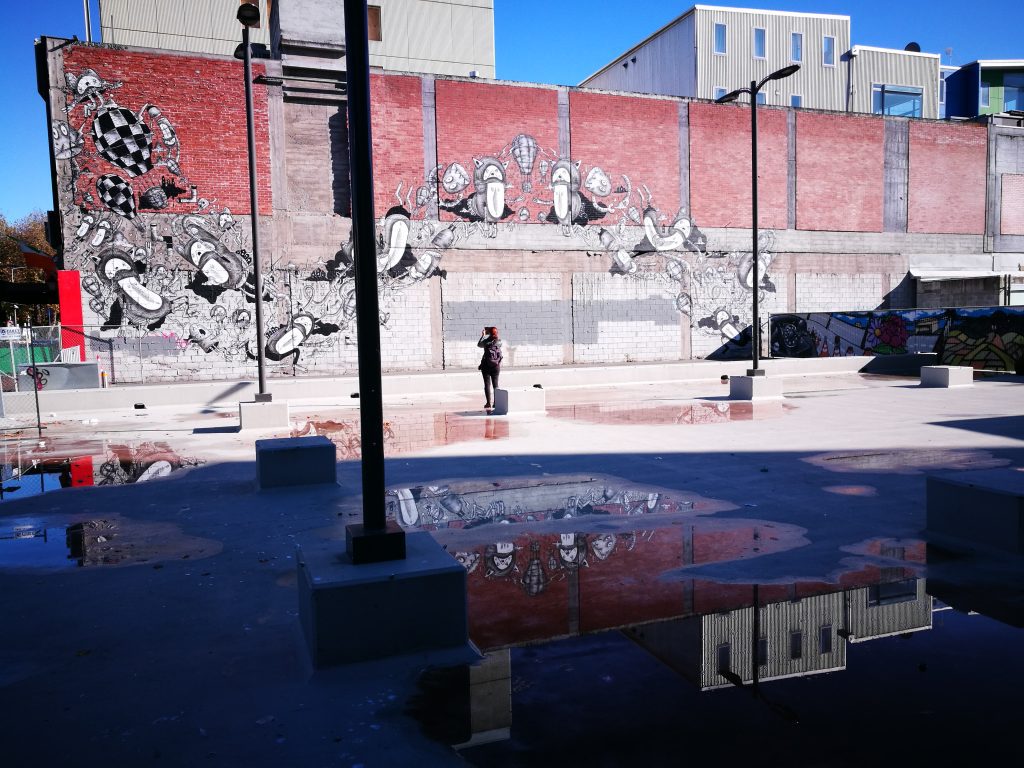
It’s not the super-strict commissioning relationship that you might get in another project, but it is still being used and leveraged as cultural capital…
Yeah, you see cities claiming: This is what we did! Well, I’m pretty sure there were other people that were part of it as well!
There are real benefits in having something painted on your wall. A lot of cities use murals for their tourism profile. So, why shouldn’t artists be compensated for doing that work? What other industry would you see that?
It’s such an old view, but it still exists and it’s a strange one. It’s one that I’ve been fighting for so long. I have painted a lot of festivals for nothing. That is the big misconception of going and painting a big wall, I end up going there for a week of my own time, I get materials, I get my accommodation and I get food, the basic things in life that you probably should get, you know? So, what more do you want? Well, that’s kind of old school from my perspective. Starting a festival with my partner Shanti, we wanted to bring something interesting and different to Whanganui because the city has never seen anything of this nature. It’s a small place. Compared to Christchurch, it’s just chalk and cheese. So, it was about bringing something different. But for me as an artist, it was mainly trying to create a festival that could substantiate paying the artist something. The artists get part of Whanganui Walls. We want to make it worthwhile for the artists to come to Whanganui, to take that time out of their schedule, to share their creativity with us. Like we said before, the benefits to a place are just so big. So, I feel like we have definitely helped to breakdown some barriers, and there are other guys doing it as well, like Deow down south with South Sea Spray. It’s important to go into bat for the cause, because there is a lot of old school thinking and often it comes from funding process. But ultimately as a festival organiser, its on you.
It is a big undertaking to fund a festival…
These events require substantial investment. We get support from Harrison Hire Master, who really come to the table for us, and Resene, who are the kind of company that have the backing to go OK, we’re going to give you X, Y and Z for free, which is great, but we’re not asking for stuff for free, we are saying, if you are going to give us a discount, then that’s how much money we need to obtain through funding. The whole principle of Whanganui Walls was always for everyone right through the system to get something for their efforts, whether you are part of the operations crew or you’re volunteering, you’re getting something. That was always the principle of the festival. Because these people are putting so much effort into it, and not just the artists, why are you doing it for free? The time it takes to put on one of these festivals is massive.
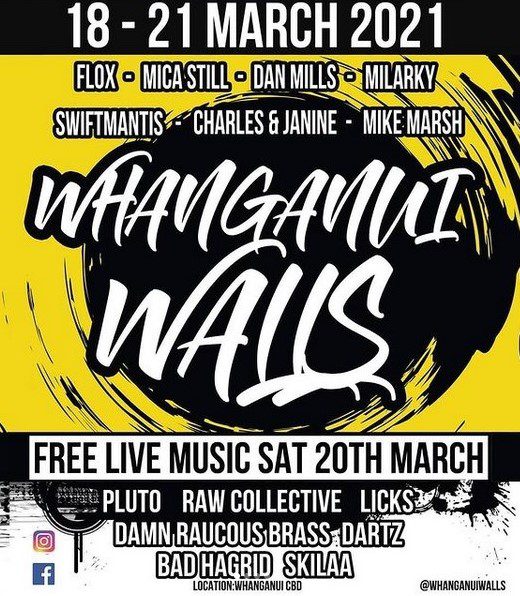
It’s not something that you fit in on a lunch break or after work. For an artist, its traveling for a week, working the whole time. You may be getting your accommodation and food paid for, but everything else still goes on back at home as well, so they need to compensate for that. It is also important to remember the years spent refining their work to get to this stage…
I’ve always been a big advocate of knowing my own worth as an artist. Sometimes, you have to walk away from things to make things right. I get it. Any artist, no matter how well you’re doing, there are always points in your career where you have your highs and you have your lows, but you have to be careful about how you devalue yourself. It is tough if you just continually bounce up and down. If you want to get some stability in your career as an artist, in my opinion, you have to stick to your guns.
We have so many super talented artists in Aotearoa, is there a real need for more mentorship to build up younger artists’ sense of self value? In New Zealand, we have a tendency to think ourselves down, is this festival a way for you to serve as a sort of a mentor figure?
It’s good to spend time with artists and ask where they are at, because there is always that tendency of not wanting to talk about this whole aspect of being an artist. Let’s take pricing a mural. There is always this tendency to just shut down about it, whether that’s because people are not confident of putting a value on what they do, so that they can survive. I’m super open with the way I do stuff. So, if an artist wants to have a conversation with me about what I do in terms of pricing or whatever it is, then I’m super open to it. I feel like without those conversations, we both don’t learn about it. One size doesn’t fit all, and if you’re at the start of your career in the art world, and in particular in muralism, there’s always things that you feel like you can’t account for, or you can’t price into a job. But even if you’re relatively new to it and you are competent and have the skills and stuff, well, why are you devaluing yourself? You’re going to produce something just as good as the next artist who may be charging double that price. I remember when I started first getting some bigger jobs, it’s nerve-wracking man, it’s nerve-wracking pricing a job because you feel like by asking for this much money and you don’t get it, then you’ve lost that job completely. But even now, if I get some decent jobs there are always tools within that process that you can use to give options to clients which ultimately will not scare them off.
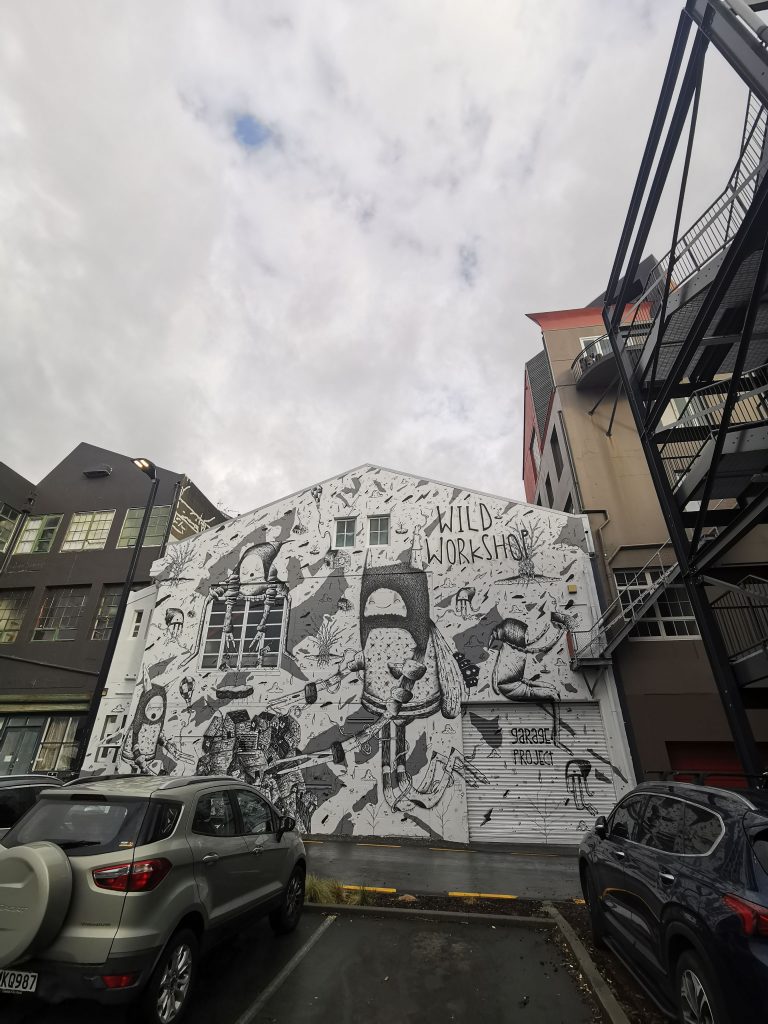
Other industries take a really hard-nosed approach to pricing, charging travel costs, time, materials… But for a lot of artists, there is the feeling that you can’t charge for things like petrol costs, or you need to take this out so that clients are more likely to agree. As much as we don’t want to emulate aspects of the commercial world, it is actually beneficial to adopt some parts…
What are your expectations if you were being commissioned to paint a wall? When you go to do that job are you wanting to pay your own travel costs? Are you wanting to pay for the machinery or for your accommodation while you are doing that job? You’re not trying to dupe anyone by doing this, but you have to try and align yourself with the expectations of a client. If they’re not paying for it, you are, so it’s really just trying to get that happy medium. From my experience doing quite a lot of large-scale commission work, you just have to be fully honest, be honest with yourself and be honest with the client, and then the conversation starts. They can always say, actually, we can’t do that, but if you don’t ask, you don’t get…
As you noted, you need to set the bar for yourself…
This has come up quite a lot recently. Being realistic about how you put your pricing in means you might not always get the dream. It’s about trying to be fair to yourself and to the client. You want to get the job, but you have to be really fair to everyone, and managing your own expectations is the hardest bit. There’s always self-doubt, there’s always that feeling that I would love this job, or I need this job, so that’s when we tend to low-ball ourselves, and before you know it, the client snaps your hand off. So, just go for it.
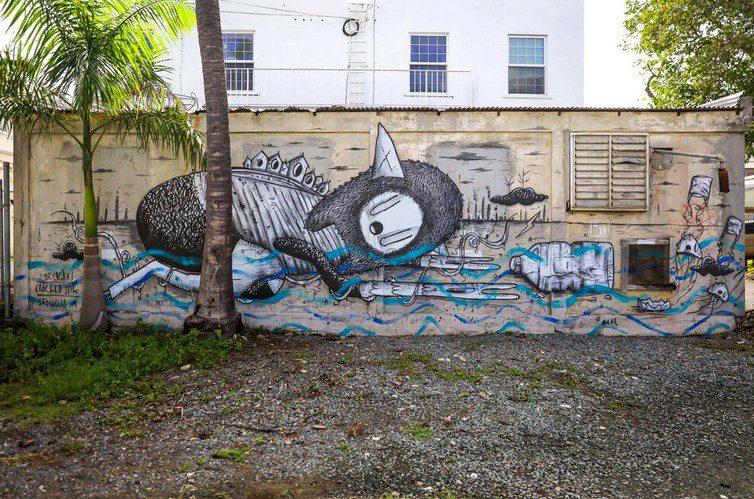
As an artist, you’re not beholden to only one way of working, you can always balance out projects to satisfy both your practical and creative needs…
It’s a malleable situation. Depending on how you want to operate, nothing is right, nothing is wrong. The main thing is if it is right for you. I have a certain style that I paint and I’m super strong on that in terms of commission work. But if you have a multitude of styles within your work and you can adapt to different commissions and you’re happy to do so, then it’s right for you. It’s just finding within yourself what is right for you, and if someone else feels that it’s wrong, that’s irrelevant. If it’s right to you, you do it. If it’s not right to you, don’t do it. You’ve got to find those boundaries. I feel like I’ve found my boundaries. I’m super black and white in terms of my artwork and in terms of the way I process things. If it’s not what I do, I don’t do it. it’s simple as that. But that doesn’t mean that’s right for someone else. It’s about finding the levels that you’re happy with and that might also ultimately mean that I don’t get as much work, but if I’m good with that, and I can get enough work to balance the books and enable myself to continue being creative constantly, that’s the goal.
That’s the key. As an artist, you have to know yourself, right?
If you can get used to the highs and the lows and make it a part of your life as opposed to making a lot of stress for yourself, which is a hard dynamic to get used to, even now it still throws you, then you can ride it. But the one thing I would say is you cannot just hold in on that and just continue because as a creative, you’re doing it because this creativity has to come out somewhere. Things evolve. Things go backwards. It’s a back-and-forth situation, but I wouldn’t change it for anything. It’s an awesome lifestyle. Opportunities come, opportunities go, and when you really take time to think about what you’re up to and where you’ve been and where you’re going you get to see what you’ve built, and you see that you’re ready to keep on building. As a creative, if you are not questioning and challenging perspectives, you shouldn’t be doing it, and if you are, it will open up a lot of possibilities.
Follow Cracked Ink online through Instagram, Facebook and his website…
Cracked Ink – The Character (Part One)
Cracked Ink’s work has always stood out as fiercely fresh and unique, with an undeniably playful vibe. His instantly recognizable black and white codex of monster characters have been deployed, in various shapes and sizes, across walls around the world, unfolding narratives inviting myriad interpretations. For the artist, this combination of a personal style and voice, developed over years, with an open-ended potential in how the audience receives the work, is a perfect balance between the need for his work to reflect his own impulses and the audience’s own agency. Moving to Aotearoa with his Kiwi partner from the North of England over a decade ago, Cracked Ink now calls Whanganui home. While he started painting in the UK, here in New Zealand the artist has turned it into his career, painting at international street art festivals, producing notable commissions across the country and establishing Whanganui Walls, applying lessons from the festival scene to a hometown mural event. Always willing to yarn and share his experiences, this conversation sprawled across topics and effortlessly passed the hour mark (hence the two part breakdown), covering his early days in Blackburn, England, his initiation into painting in the streets, moving to New Zealand, making connections, the need to be true and setting up a festival…
____________________________________________
Earlier this year you did some work with Westfield Riccarton Mall here in Christchurch, what is it like working with larger commercial entities?
It is always interesting working with a brand or working with a business. Generally, they have come to an artist because they like the work, so it’s always interesting navigating that dynamic between keeping everything you want, and knowing they are commissioning you to do the piece. You want them to be happy, but you also don’t necessarily want to cross any lines in terms of giving anything up…
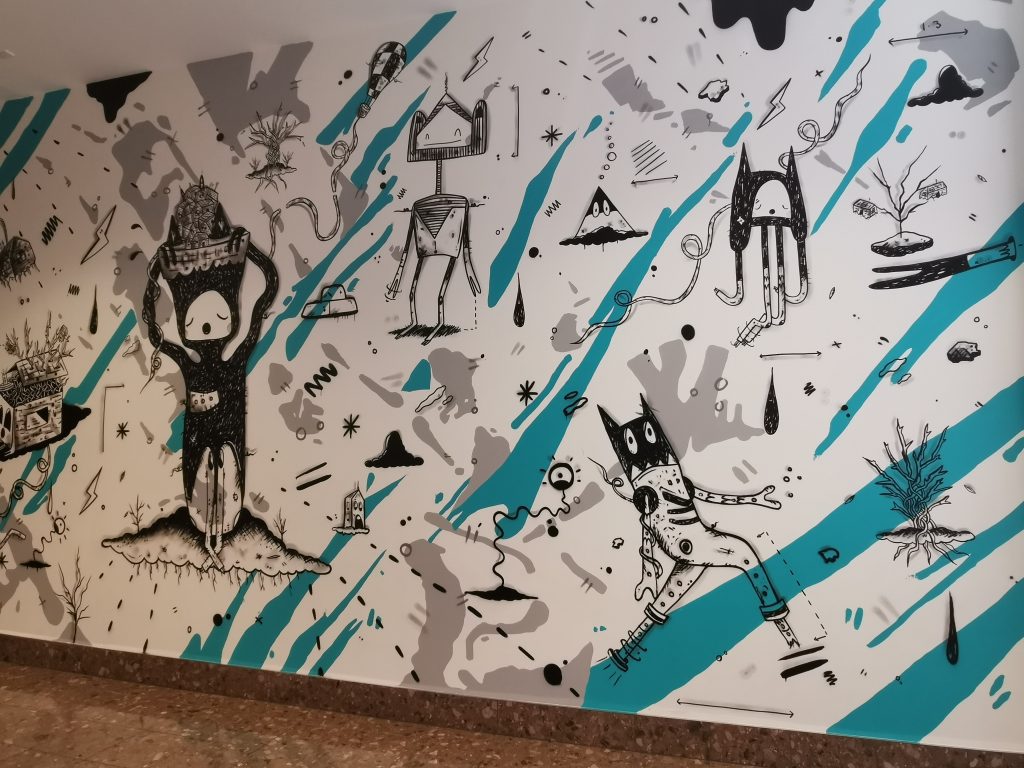
I imagine there’s also times where you are just waiting for the ‘but’…
Totally.
Often there are just so many stakeholders, right? It’s dealing with one person, but before you know it, someone else’s voice is part of that conversation…
You get it from the beginning, generally. If you get a surprise on a job, you just have to deal with it when you get to it. But I try and figure that stuff out straight away, I just put my cards on the table and tell them straight up, and if they don’t like it, then I just politely walk away from it. I don’t get all upset, I just explain that I’ve been doing it for years and cannot twist in that direction, but I always try and help them solve the problem by putting them in the direction of another artist who might be a good fit.
Did it take time to get comfortable with walking away? There must have been times when you just weren’t able to do so, or have you always had that as a kind of philosophical base?
I set that out pretty much from the beginning. There are a couple of jobs that I shouldn’t have done, but I can count them on one hand, so I have stuck to it. It’s easier for me to stick to that anyway because my work is so quirky. It’s not as if I’m painting realism where a client would say: “Well, we want something really specific…” They know what they’re getting and it’s really easy to twist a narrative into my works while keeping my style. But it means that I don’t get as much work as someone who paints more realistic stuff, because when you paint realism and all different kinds of subject matter, it’s way easier to relate to in some form or another, whereas my work is definitely more specific. But I like that, I don’t want everyone to get it.
It’s an interesting trajectory, from the heyday of the early Millennium, when people working in the streets had that very iconographic, stylised approach, to the rise of realism, which is entwined with large-scale muralism. It was a case of technical development, but also the reality of serving a commission…
It is interesting and it is something that I think about a lot. There are so many different angles, but ultimately, I feel like it is going along with human nature and the laziness of society. For example, you paint a portrait of a famous person, that image is so relatable, and so accessible, that it’s never going to be a failure…
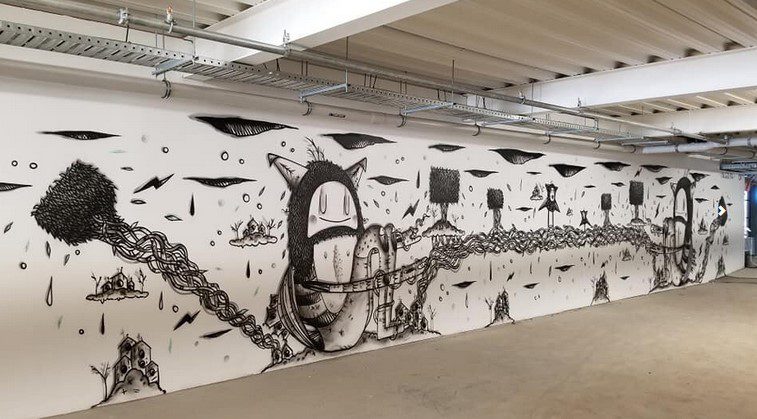
But where do you go from there? How do you ensure it develops as a distinct voice?
For me, the creative process is starting a sketch with an idea, coming up with a story, then having these different, weird, interesting, non-functional, kind-of-human-but-not, characters bring it to life. That’s what it has always been about for me, actually being creative, trying to make something that’s completely new, that has a style and also has a story from the beginning of where I started. It’s like a family growth…
Even the poses and the actions of those characters have come directly from you, they’re not drawing from another source. In that regard, when did your characters crystallize? Did they come out of another form of expression, or was it a conscious thing to sit down and develop a character?
I was in the second year of my degree for graphic design and this guy, Dean, came onto my course. He was heavily involved with graffiti and we just connected straight away. I feel like until then it really wasn’t my path to get into doing street art if not for meeting him. I would have been 18, so it was quite a while ago, but I feel like my pathway into doing that stuff was purely because at that moment in time I met this person. It’s interesting how a time, a place, a moment can change your life.
We are a similar age, so were you aware of the street art scene emerging in the UK around the turn of the Millennium?
Definitely. I was studying graphic design, I was always doing something creative, often on Photoshop or layout programs like QuarkXPress. Skating was a massive thing when I was at college as well. Skate culture really interested me, even though I wasn’t massively into skating myself. I had a lot of mates who were into it and that whole movement and style from skating got me interested in what was happening in that scene, particularly when I met Dean. At the time a lot of artists were blowing up, The London Police were massive, they blew up around ’96 through to ‘99, straight away it drew me in…
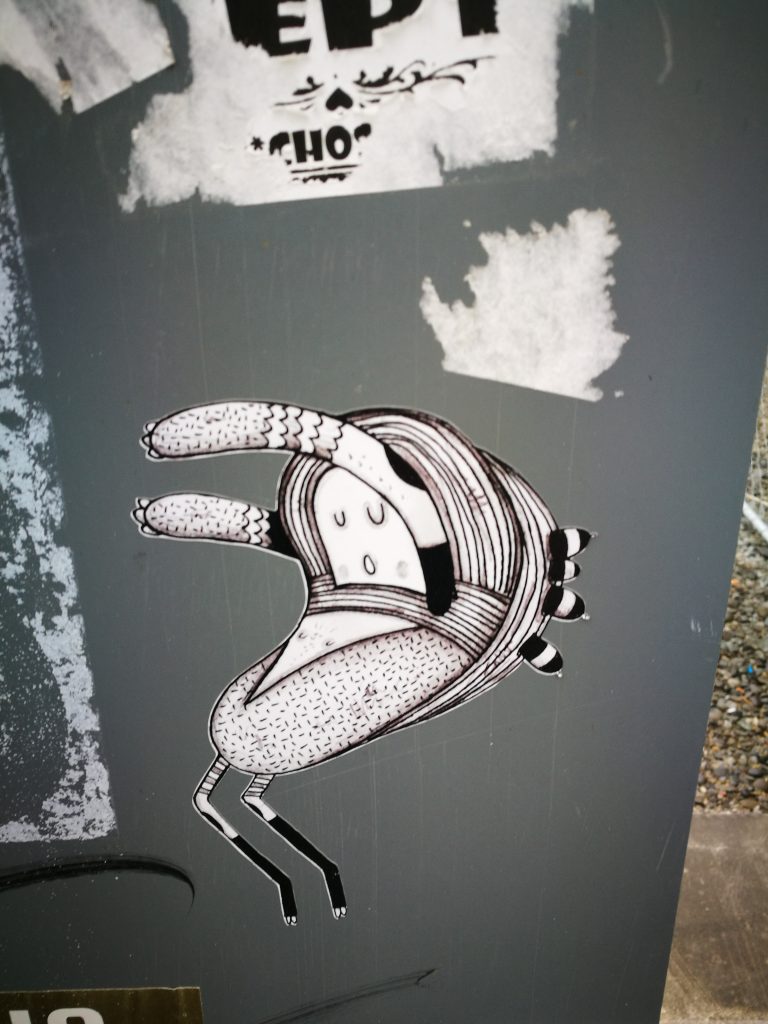
They had that really graphic quality that must have been attractive to someone studying graphic design…
It drew me straight in. At the same time there were so many different artists that were doing it, the thing I loved about it from that character perspective is that you could interact with any type of medium and apply it to a wall. Other artists were important too, Swoon was massive at the time. I was living in Manchester and Swoon had been in town and you could see her amazing pieces, that intricate detail. I loved both of those styles. It was always a case of how I am going to do something for me that incorporates a super graphic style with these other influences…
You were looking to find a balance that resonated with your own interest?
Subliminally, for sure. Whatever form of art you do, whether it is muralism, street art, illustration, sculpture, you always have your peers, you always have someone that influences you in some way or another, whether that’s directly or just something that sits in the back of your head. I always wanted to head towards a kind of sketchy style because when I was at University, I did quite a broad spectrum of study that included printmaking and photography before I specialized in graphic design. So, I did all the printmaking stuff and I loved it, but when I was doing it, it was more just trying to implement the techniques without really knowing how to twist them into what I really wanted to do. So, when I got into doing all this character work, which was super graphic, super bold, I got a little bit, I wouldn’t say bored, but there were a lot of people starting to jump on that direction, so it was like, how can I keep that essence, but drive it in the direction I wanted it to go? I felt like I didn’t have the confidence to make that switch because once you jump into a style, you kind of get stuck and it becomes scary to jump again…
In those early stages, were you making things in the studio exclusively? How long was it before you started getting up in the streets?
It was actually pretty quick. Dean arrived at the beginning of my second year and when we started hanging out, we were basically a couple of stoners. He had a place over in Preston which was close to where we were studying in Blackburn, we would just hang out and have our little sketchbooks. It quickly became something pretty obsessive actually, just constantly sketching. We would go back to his place, get blazed and just start sketching. At that stage he was painting quite a lot, so he would be like, come out with us for a jam. I remember the first time I went out. It was under a train bridge near Preston and it was freezing. It was 3:00 AM in the morning, it was pitch black, we had pre-rolled some joints and we just went out freestyling. As soon as I gave it a go, I was hooked on that rush of just going out and painting. From there it evolved into: how can I take what I do and change it into different things? Paste-ups were massive, I would draw intricate stuff and could literally just turn up and do it…
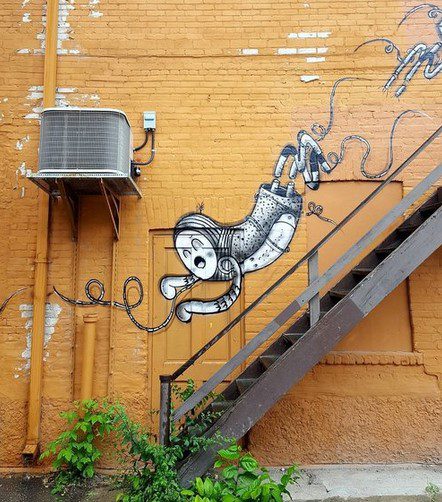
How early did you become aware of how to approach a physical space? Was it part of what you were learning in graphic design as well? A graphic designer has a functional element, right? Designing objects for packaging, things like that. Did you pretty quickly understand that the streets provided an important context?
It is something that comes with time. I think everyone has something in them, an aesthetic that they can produce or do and apply to certain principles, but actually just getting out there and having a go is how you become aware of certain things and how things should sit, so I think you kind of learn those things on the go. I don’t think you can ever plan for that kind of thing, it’s something that builds, and then as you get deeper into it, you start thinking differently. You start thinking, what can I do with this? I definitely couldn’t plan for it anyway, but my expectations were small at the time, I just wanted to go out and be in that moment of painting. The more you paint, and the more you go out and interact with the outside world and the surroundings, things kind of evolve, things happen to you, and you become immersed in that world.
There is a long tradition of characters in graffiti, were you thinking of your characters as accompaniments to graffiti or were they always intended to stand alone?
I think initially that was the thought because I came into it with a graffiti writer, and it works well having the piece and the character. That was definitely the thing for a little bit, that was what was happening. But I wasn’t really tied to that whole situation. I was fresh into it, so it quickly became about how can my characters exist in this world by themselves? I was motivated to get out and try different things. But it’s been a bit of a mixture for me, it started off as a graffiti thing, but it quickly became more, I guess…
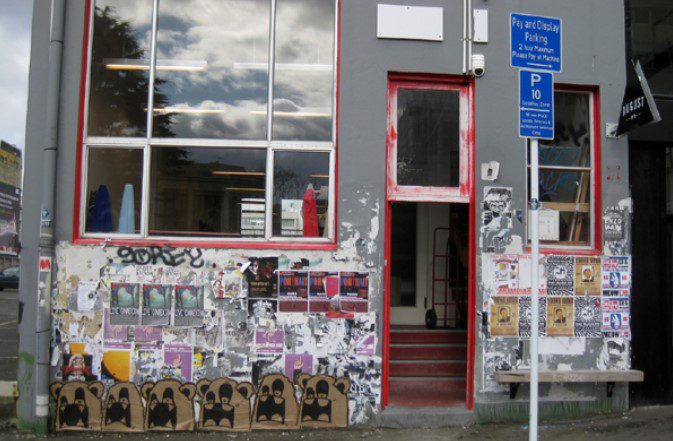
Studying graphic design, I assume you were thinking of that field as a career, when did you start to think what you were doing in the streets could be something more?
It wasn’t for ages, really. It was never a part of my thought process when I got into doing stuff in the streets that this was going to be something that I do as a gig. It was just about going out and painting and enjoying that and it was heavily about being with your mates.
Were you making a full-time living from art or graphic design in the U.K. before coming to Aotearoa?
Definitely not in the UK. I was still working a job and all my art was on the side. I was doing exhibitions and stuff in Manchester, and I was trying to earn some money out of some gallery work, but it was never in my thoughts that this was going to be my full-time job. I came to New Zealand in 2006 with my girlfriend who is a Kiwi, we weren’t actually coming to stay. We came with a six-month work Visa but my partner decided she wanted to go back to study. I was pretty chill, I loved the life here, it’s a whole different world over here compared to growing up in the North of England. You’ve got time here, you can breathe over here, there’s more space, less people. It allowed my mind to slow down a little bit and focus on the direction I wanted to go. So, I jumped into it. I just went for it. In the back of my mind I wanted to make something with art my full-time gig, but the reality at that stage was that I was still working on building sides and all sorts of different things to pay my bills.
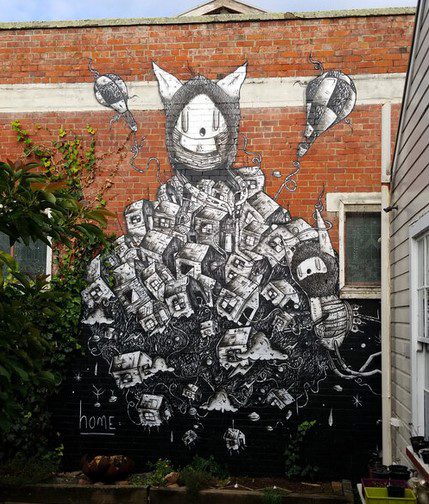
How did you go about building connections here in New Zealand with other artists? Did you consciously reach out to people, or was it a case of diving into the work and letting it occur naturally?
That happened just from diving into it, getting out and painting. I did an exhibition in 2007 at this space in Auckland. It was my first little show, and it was in this semi-immersive kind of exhibition space, a community centre type of space in Devonport. It was very low key, but Cinzah lived around that way, and was connected with them through some projects, and he left a message in the sign-in book, saying: “Where the fuck did this come from? Here’s my email, get in contact and let’s go for a paint…” I became really good mates with Cinzah and it just evolved from that. Flickr was massive at that time as well; everyone was posting stuff. That was how I met Drypnz. We became mates on Flickr. He asked if I would be keen to do an exhibition in Wellington. Eight or nine months later, still not having had a real-life conversation with him, I rented a car, loaded it up, and I drove down to Wellington with all this gear. I got to Wellington and met Drypnz on Cuba Street for the first time. The opening for that show was a big occasion in terms of meeting a lot of creatives, especially around Wellington at that time, PNTR, Editor, Ghostie. I met Kell Sunshine, although she wasn’t painting at the time, the BMD boys…
That’s an impressive list! I was in Wellington just a couple weeks ago and the footprints of so many of those names are still strong, not to mention their work further afield as well…
It was crazy man. It was such a good time to be around. Meeting all these guys that were in the scene and were already cranking on what they were doing, it just made me want to crank it up more. It just kind of all grew from there really, having that inspiration of those guys and girls to just get in on it and get painting, it really pushed me to where I wanted to be.
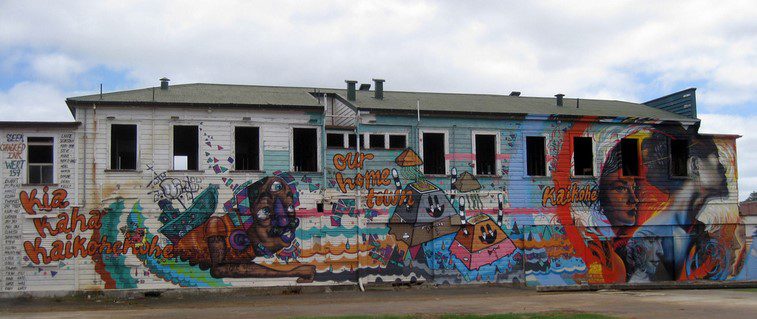
Fast forward a few years and in part through some of those connections you find yourself painting in different countries, that must still be pretty amazing. Do you still think about how you travelled all this way to be here in Aotearoa and now you are travelling the world for festivals like Pangea Seed’s Sea Walls…
Oh man, I don’t know if you call them manic episodes, but you know when things like that happen, it takes you back a little bit. When I got involved with the Sea Walls crew, it was initially to be an artist as a part of the Napier event, and that was a bit of a leg up for me. Cinzah was running that festival, so he got his mates involved. He mentioned he was talking to these guys from Pangea Seed. He had already been to Mexico for a project, and now he was thinking of bringing Sea Walls to New Zealand. He contacted me and asked if I wanted to be in the line-up, and I was like, sure, and things just went from there. I never expect to be part of the Sea Walls crew, that’s for sure, so to end up travelling to different festivals was crazy.
Continued in Part Two…
Follow Cracked Ink on online on Instagram, Facebook and his website
Jacob Yikes – Immersed (Part One)
Jacob Yikes needs no introduction. His distinctive wall work has been a familiar element of Christchurch’s post-quake landscapes, turning walls into vistas filled with intricate, impossible architectural forms and characters who are in turn both playful and nightmarish. But while his large-scale murals might provide a pathway to ‘Planet Yikes’, his studio and exhibited work has shown an artistic evolution that delves even deeper into the themes at the heart of his expression. His works on paper and canvas show an artist coming into full bloom, imbued with personal symbolism and exploring a range of imagery, expressive physical processes, and experimental and expanding mediums and materials. We caught up in his studio, surrounded by a series of still-in-progress new works, evidence of his soon-to-be-exhibited recent output; large paintings pulsing with dynamic energy. And yet, fittingly, our conversation took place just before Yikes’ March trip to Dunedin to paint a large wall, a reminder of his ongoing occupation of public spaces. With the sun shining outside his studio, we discussed the transition between street and studio, his latest body of work and the process of their creation, and how life has a way of keeping you honest…
Yikes, the last few times we have caught up it has been while you were painting outdoors, so it’s a nice change to be here in your studio. Your practice has always had that inside/outside dichotomy, shifting between walls and canvas so to speak, but considering how much work you have put in painting outside over the last five years, it’s easy to assume you have slowed down somewhat on that front!
Yeah man, yeah… (laughs)
Has that been intentional, to allow you more time in the studio?
It’s a mixture of things really. I guess life catches up, you know, I’ve got two small children, so that’s definitely a factor, and they’re getting bigger, so that’s a thing, trying to fit that in. I think I’ve definitely felt a transition from wanting to produce works outside to being in my studio. Obviously, my studio is at my home, so I’ve got a very good set up now. I can kind of work quite erratically sometimes, so now when it is time to work, I can literally do it. Christchurch is pretty small, and I’ve done a lot of painting here, it’s not like I’m bored, but I am the type of person that has to keep doing new stuff. There’s definitely been a shift, and it’s not like, I’m never going to produce big works outside again, it’s nothing like that, it’s more like a certain tick that I need to itch! (Laughs) I feel like it’s a pretty natural progression as well, I don’t feel like I’m missing out on anything. I’m still here, I’ll still do whatever, it’s good…
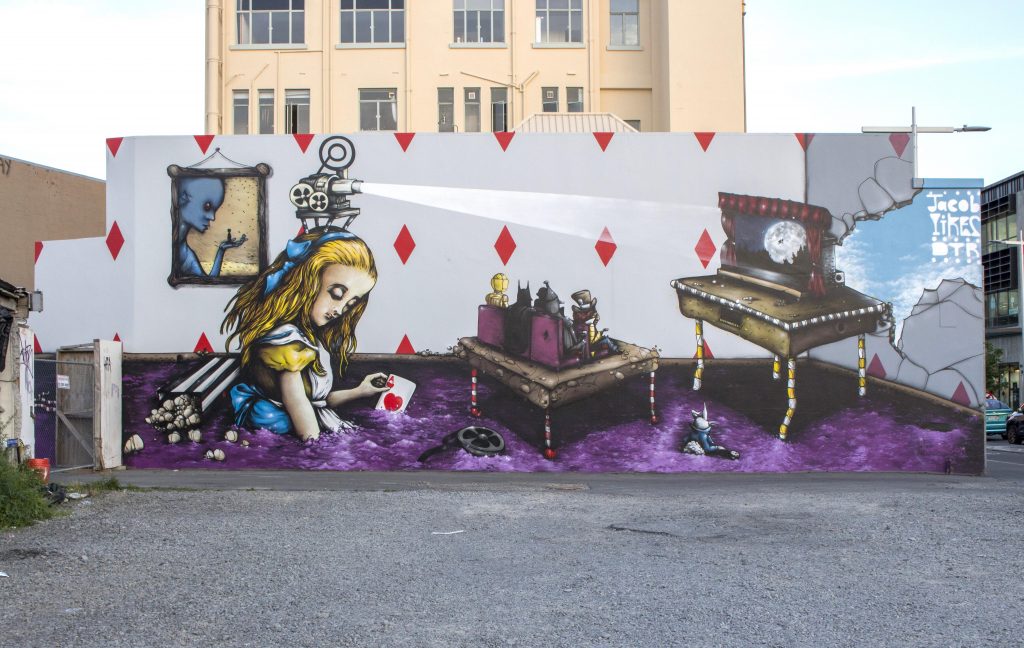
Yep, and they always have been, and they always feed off each other. There are only so many hours in a day, and in a week, so putting it all into one thing, it’s really hard to try and find time to do the other. In the past I’ve sacrificed a lot of sleep to get that happening and it works for a while and that’s cool, but it’s not physically possible for me, and you learn the hard way. I’ve learnt that, and having children they will let you know… (laughs)
For sure…
So, yeah, it’s just about what do I want to do? What do I see myself doing? At the moment, I think the studio-based stuff is really where I’m trying to focus. But again, I wouldn’t be doing any of this studio stuff if I hadn’t done certain things outdoors. They always feed off each other, and they always will.
And of course, painting walls is built into your profile as well, right? It affords certain opportunities and exposure…
Absolutely.
From a material point of view, both approaches obviously have different potentials, as well as different challenges. What do you see as the main differences, in terms of what you can do in the studio that you can’t do when you’re working in the streets?
There’s always a certain element of impact that I’m trying to achieve with both, and that’s achieved very differently outdoors than it is indoors in the studio. So, with my outdoor works, I was introducing bold colours with quite wild imagery, wild in the subject matter and often how it is executed, like with a lot going on. And then I brought that into the studio to a certain extent, and I’ve been able to, even though because the works I’m doing at the moment and in the past have been quite large, not massive, for canvas or paper work, or board whatever, they’ve been quite big but they’ve gone bigger, I can focus way more on a smaller scale but still get good impact as well, whereas outdoors, you can, but it is a lot of effort. It’s like, for those bigger works, I tend to just do them myself because of how I work, it’s completely different to painting pieces of graffiti with any of the boys, it’s a different process, it’s a different mind-state. In saying that, while a lot of my work outdoors has been very busy, it has also zoned in on certain areas and really worked them, but to be honest it’s a lot of time and effort and often you’re not really getting to the point of that’s what I was trying to do, so you have to kind of walk away from them, feeling like ‘I could’ve done that’, ‘I should’ve done that’, and that’s come from graffiti too, like every every piece you see, there’s something that you just wish you’d fixed, and you know that’s just part of it, but with the studio stuff, I can’t walk away from it, it’s not a wall in town, I’m living with it. In a bizarre way, it sort of speaks to me when I’m doing it, so that’s reinforced the idea that I can work really hard on these areas of the painting and achieve something where there is more impact.
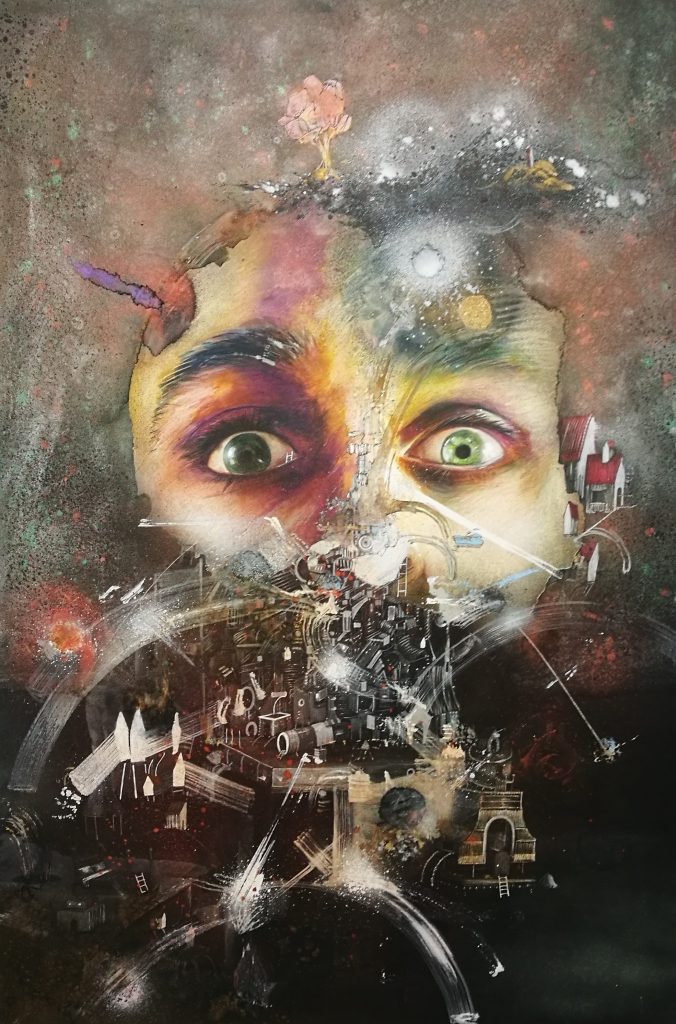
When you are painting a wall and you stand back and take stock, there must be a strong awareness of the public nature of the process, simply because of the surroundings, whereas in the studio I imagine you can get really invested in producing work which is increasingly personal, you can be completely focused on it and enveloped by it…
Definitely, because as an artist there’s always, I mean, I can’t speak for every artist, but there’s an element of being self-conscious about what you are doing. When you produce public work, you do pretty much need to wear a hard skin, or you can retaliate, which is also something that I’ve probably done a lot in the past! (Laughs) But that’s just kind of who I am too, I don’t have lot of patience for dickheads in all formats (laughs), so it all just kind of comes with it. But with the studio stuff, it’s me, myself and I, and that can be good and it can be bad, because I can be my own worst enemy. I guess it’s that little voice just kind of kicking you in the ass, it’s good, but outdoors you’ve got your self to deal with and what other people think. But at the end of the day, I’m not really doing it for what other people think. I mean, yes, there’s this massive amount of positivity that’s come with public work, street art, whatever, but I feel like I get away with a lot (laughs), you know I’m not out to paint pretty pictures, I wouldn’t even say I’m trying to beautify things, it’s not the reason I go and do something, if that happens that’s great, but I know not everyone’s going to think that way…
It’s something that’s a problem with the adoption of urban art into the mainstream and it’s perhaps at odds with the roots and the intentions from which it has grown. Essentially urban art is about personal expression going public, it’s not solely, or even explicitly about acts of civic duty or beautification…
That’s right, it’s not community murals…
Yeah, they are a completely different thing. At the heart of it, urban art is about personal style, personal communication, and that’s often the hardest thing to explain. People celebrate and champion these beautiful things, whereas what graffiti and street art are really able to do is take art and put it in the streets, it can be beautiful, but sometimes it can be challenging, or visually unexpected…
Yeah.
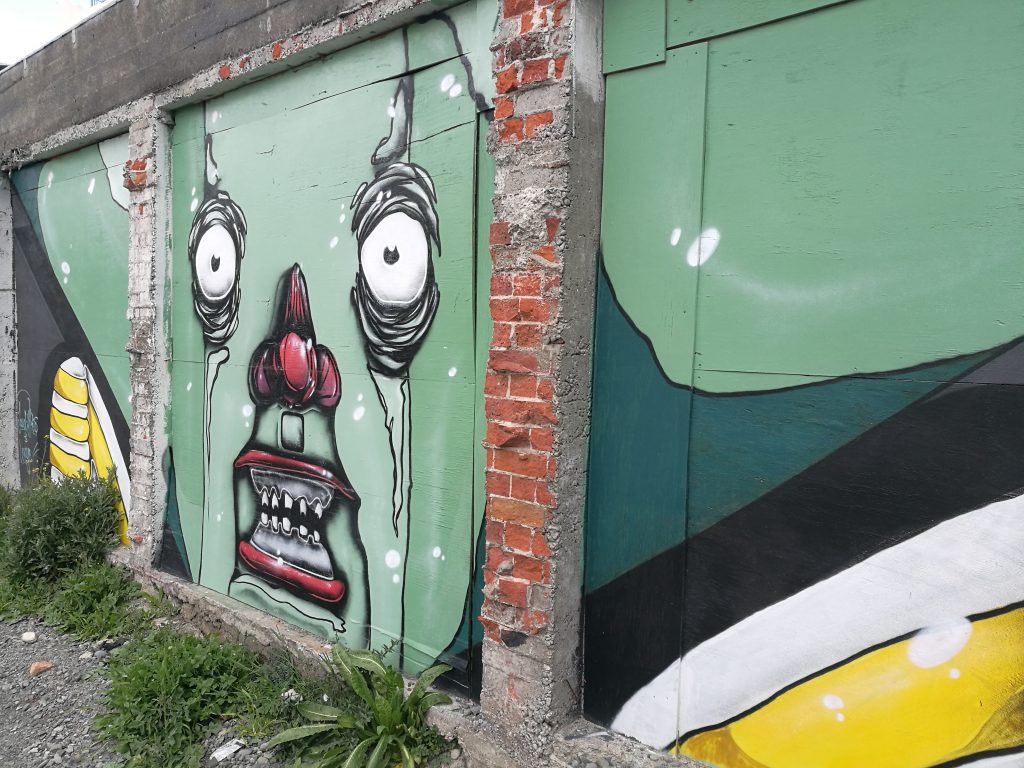
And that means it is lot of things, and that diversity is really important in retaining relevancy and potency. We are surrounded by a number of your latest studio works, the scale of your studio pieces has been growing over the last few years, and these works are another step up in size…
They are. I think they have to be…
Yet for me, they are still clearly distinct from your wall works as well. Even though the works are getting larger, the things you can do in the studio are still really clear and obvious, from the detail, to the actual style of painting and the material approaches. Is that something you are wary of, that despite the size increasing, they are still going to be honest as studio works, rather than edging towards murals on paper?
Yeah I guess, when I think about it, before I really started focusing on studio stuff, I was painting big work, like not monstrous like it got, but a piece is a pretty large painting, so what I realised, was in a studio I can create completely different feelings with the same materials, but I can’t do that with walls, because it literally comes down to how they are sitting. With washes, and the metallics I add into the washes, which are the things I’ve concocted to make these paintings, they kind of have to be flat, they are always in a very wet stage until I spend the last few days finishing them. Also, like I was mentioning earlier, because I work on so many at a time as well, it works with my erratic personality too, it’s something I have to do, because if I don’t, I’ll ruin a painting. I’ve got all these ideas all going on at the same time, and if I put them all into the same painting, it’s just overkill. But when I paint on the street, I do that, I overkill, because it’s big. But you know this time around, I was more interested again in coming back to that impact, but thinking about how I approach it… In the past the works were big, but what’s going on inside of them was a big amount of work too, this time it’s the same sort of concept but I’ve slowed it down. There is, I think, more of a mystery to them, as opposed to zoning into these other works and getting lost in them, you can still do that with these, but there’s a bit more mystery…
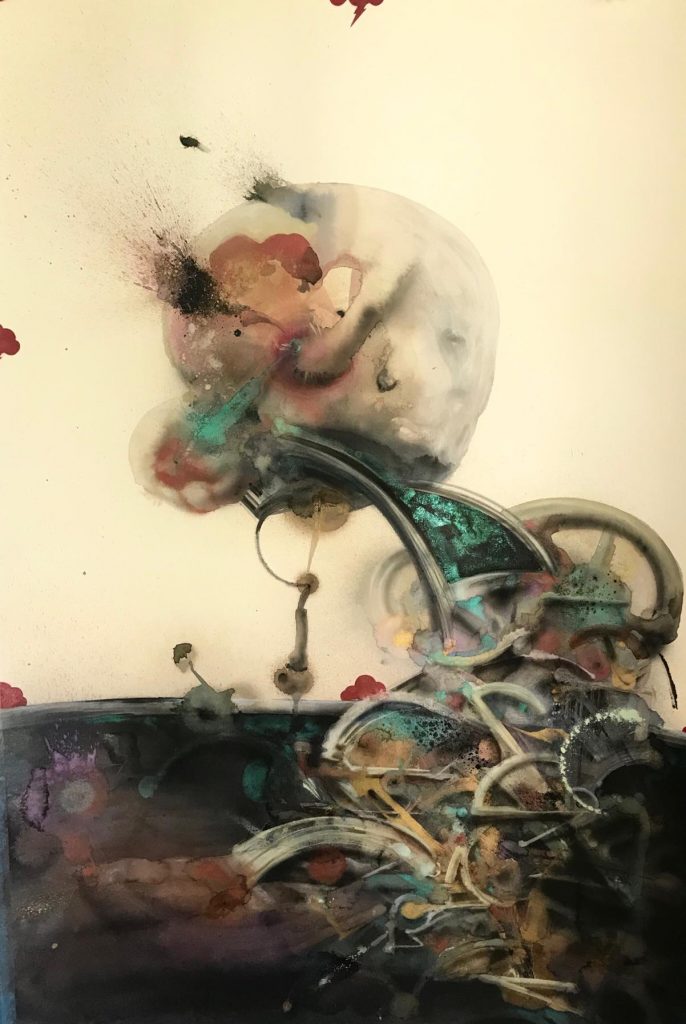
These works have a dynamic energy that breaks up the focus and sharpness of some of your previous works, there is still a suggestive sense of action going on, but it isn’t as definitive or finite as previous works might have been. That dynamism adds a personal quality, because they are reflections of your physical movements, which are of course relative to your personal state at the time you executed them…
Absolutely man, I think they are the most real paintings I’ve ever made. I’m not really the type of person in the past that would address a lot of things that are in these paintings, you know, and I haven’t, I’ve let it control my life, and I got really unwell with it, so I had to let it out. In a sense I’m kind of showing my demons in a way, but not in a way that is trying to make anyone concerned, it’s a healthy thing for me. It’s a way of me dealing with twenty something years of bullshit, so I really think that these works have their own story behind them. They are a body of work but each one is an individual reference to me. Being that they are a bigger scale too, I don’t know why, it just feels like I couldn’t get that same effect if I didn’t do them on this scale. Even with the paper ones, if they got any bigger it would’ve been too much and any smaller and it wouldn’t have worked. For a while I went through a period, for a good few months, where I was not able to paint anything, to draw anything, I literally reclused and stopped, and then kind of came out of that and this is what came from that. I guess too, there is a very different process to how I’ve worked in the past, where I would just go, go, go, go, non-stop, no sleep, I just went for it. There was a lot of work that came out of it, but a lot of it, man, I was in autopilot for a lot of it. I look at them and I know what they’re about, what’s going on, but I’m like, when did this even happen? But with these ones, they are all so much more relevant and they are all so much more decisive too. There’s no work where I’m like, that one probably shouldn’t be like that. Now there’s a whole different process…
Do you think that’s a combination of the timing being right in terms of what you are expressing, but also of how you are able to express it, through your actual practice? In a way, nothing is wasted if it has led you to a certain point, right?
Definitely.
Do you feel that these works represent an arrival point at how you are able to express these ideas visually?
I kind of have the mind set that things happen for a reason, that you experience things for a reason, like whether you know that when it’s happening, or you know it later on down the line. But I definitely think I’ve always found myself at the right place at the right time, especially with how my career has started to shape itself. At the same time, it hasn’t all been roses, you know, there has been a lot of bullshit as well. But if there wasn’t that bullshit, there wouldn’t be any success. I think it gives me ammunition to actually paint these works like I do. It’s how I process these things, I have certain kind of conclusions with my life and predominantly my art, because my life is my art and that is probably more apparent in these works than I think it ever has been. Again, the subject matter is a more refined me, rather than processes made by me or just stuff. Past shows have talked about stuff, they have been derived from me, but they’ve never really been about me, so it’s sort of narrowed in, and I guess that’s happening now because that’s what was meant to happen. To be honest, painting them is a way for me to try to figure a lot of that out, you know; why? why everything? So, the two work pretty well together, but I think you know, that’s the thing with progression, too, with anything you’ve got to take whatever comes, because you won’t progress. You can’t have it all good and progress to something better, without downfall, because there is no balance…
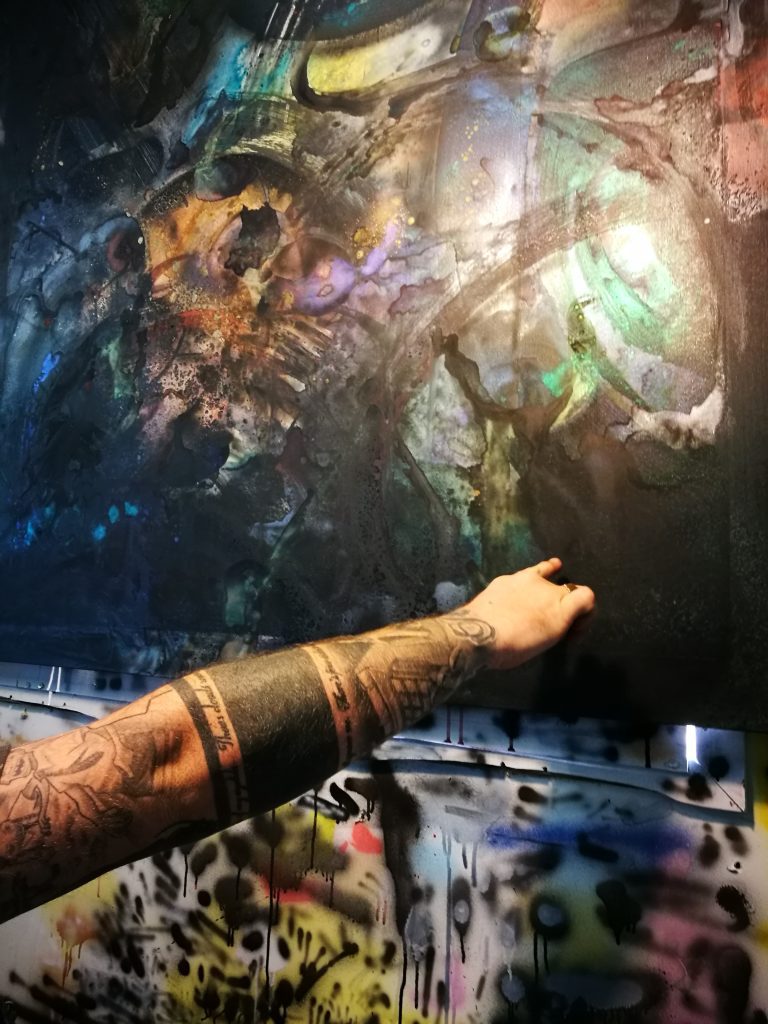
That’s an important skill, the ability to understand what is happening, and to figure out that path. If your work is the same for twenty years, then something is probably going wrong under the surface…
Good luck to you, if that’s what you are up to! Because I think as humans, you all deal with things in different ways, based on personality, based on past experiences, based on how you’ve been brought up, based on however. Maybe it’s part of getting older and having kids, but I find myself having to really create my own path, you know, what I mean is, it’s a hard thing, because as an artist it’s quite difficult to live in this day and age, there’s a lot of pressures, financially, whatever, but…
Particularly somewhere the size of Christchurch…
That’s it man, it’s not massive and you know, I think I’ve always known that I don’t want to follow suit, it’s just not me. I just can’t do it. I think too, to be honest, that’s where the studio stuff has become more dominant, because this is truly where I’m supposed to be too. Before I was into doing graffiti or before I was painting large scale works, I was always into drawing, always into making art, so it’s like literally from an early age, it’s kind of my been my forte. But you know, it’s still a battle to make that an everyday thing, to make that a reality, it’s still really difficult. So I think taking a step back from doing walls puts a bit of pressure on things like that, because at the end of the day, painting large scale works is how I make my living, how I’ve made my living, selling paintings and doing commission works as well, it all fits in, but predominantly, the walls like I have always said, they are advertising for me as an artist, so it’s difficult to really put one to a side and then focus on one other thing because at the end of the day I’ve got bills!
Yeah, but that challenge is important to take on as well, right?
Yeah, and again it comes back to the fact that there is nothing to do but roll with it. I can create my path, and I know where I want to go, I don’t know where I’m going to end up, but I know what way I want to go…
Which is as important as anything right? People talk about it’s not the destination, it’s the journey…
Absolutely, because I’m kind of too afraid to arrive at a destination! (Laughs) I’m in no hurry to get there! And I think when you get there, if you get there, good and bad creates where you arrive, it’s all about how you deal with it in that process, and I think for me as an artist, the best way is to just literally keep doing what I feel is best. I have to get it out, because if it’s not true to me, at that point, whatever comes after doesn’t matter because I’ve put something out that’s not fully me, and that’s the battle of being an artist too, you want to produce what you feel is right and where you want to go, but at the same time, you have to make money and things too…
It’s a reality…
Yeah, it’s that reality. But again, in the past I’ve sacrificed sleep to do both, so it’s definitely all learning, every painting I do I learn something from it.
Stay tuned for Part Two…
Featured image photo credit: three-six-six media
Jacob Root – So Much Fun
As part of a new ongoing series of interviews with young (and young at heart) local artists who have been a part of, or influenced by graffiti and street art, we caught up with young stencil artist Jacob Root, aka Distranged Design. The diversity of the city’s young creatives is notable, but the influence of urban art is undeniable in the work of many, either evident in techniques, material approaches, conceptual ethos, or of course, although not exclusively, by the explicit act of working in the streets.
Jacob’s work has been undeniably influenced by the global rise of urban art and locally by the emergence of graffiti and street art’s popularity and visibility. While he does not have a background in graffiti writing, his work illustrates the way urban art has become an established visual language and gateway for young creatives both inside and outside, raising questions about the notions of ‘authentic production’ and highlighting the evolving landscape of this cultural phenomenon. His choice to use employ stencils is fitting, as the technique is a microcosm of sorts of these winds of change, the guerrilla political roots are still inherent, but they now exist alongside intricately detailed studio productions and large-scale murals.
Jacob’s eagerness is infectious and refreshing. When we sat down to talk, his responses were littered with phrases like ‘it was so much fun’ or ‘it’s awesome’, signs that he is enjoying making art and the experiences it has afforded him so far. In a world where cynicism is often too easy to embrace, Jacob Root is busy having ‘so much fun’…
So, Jacob, introduce yourself, let people know who you are and what you do…
My name’s Jacob Root and I’m a 17-year-old design student at ARA. I’ve been teaching myself recently how to do my own artwork, like I can’t really hand paint or things like that, so I’ve gone with the whole stencil approach and it’s kind of kicked off a bit, I’m pretty stoked on how it’s been looking…
You’ve definitely been visible, you have recently had work in several exhibitions, you’ve been busy painting Chorus boxes, and you’ve also been assisting some other artists on their projects, so give us a bit more information on what has been keeping you busy…
Recently its been the Chorus project, which are the big cabinets, the green boxes around the place. I got asked to do two of those to spruce up an area in Gayhurst Road. I was pretty stoked to get asked to do that, I wasn’t really expecting anything like that to come along, but yeah, its been awesome doing bigger pieces, bigger stencil works. It’s so much more fun to work on that bigger scale.
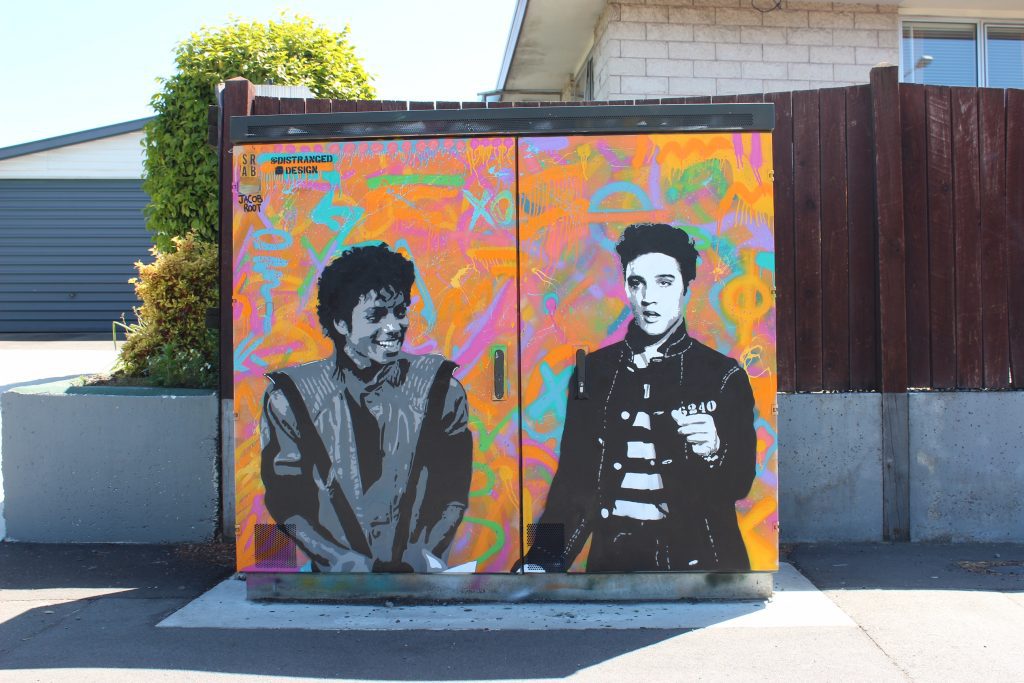
And you’ve worked with Joel Hart on a couple of his pieces, how have you found that experience?
That’s awesome aye, it’ so cool, Joel’s such a nice guy. It’s so much fun learning different approaches to things that I wouldn’t have thought about doing, different ideas on stencil work. So yeah, it’s so cool.

And of course, you have been exhibiting your work, you have been in a couple of shows at the Welder Collective [Jacob was part of the Welder shows Unframed and Throwback], and you’ve got some work in a show coming up in a show at CoCA, tell us about that show…
The CoCA show is run by Bounce, by the Red Cross [Bounce is a website focused on youth well-being], and it’s a youth exhibition, so it’s for 25 year olds and under, and I’ve got a couple of pieces that will be exhibited there, I’m pretty happy to be asked to go in there…
Are you from Christchurch? Are you born and raised in Christchurch?
Yep, born and raised in Christchurch, I’ve been here my whole life…
So you’ve obviously been here through a pretty chaotic but fascinating time period, and especially for the rise of urban art. So, at your age, the experience of the city being rebuilt, it must have been a pretty formative period for you right? How much of an influence has this post-quake landscape and the visibility of urban art had on your work?
I love like, just going through town now, everywhere you look, there’s so much street art. It’s just such a bright, vibrant kind of place to come through, even though like its had its dark toll on the city, there’s been a spruce up with the art and I reckon that its kind of like bringing it back to life, it’s been awesome. It’s such an impact seeing top artists like Owen Dippie, I love his big ballerina piece [the now obscured piece on the rear of the Isaac Theatre Royal], seeing that kind of stuff in your own city, it just gives you a bit of a kick to keep going for more.
Do you have a background in graffiti or street art in a traditional sense?
Nah, I can’t write graffiti or any thing like that, I’d be pretty keen to learn, for my backgrounds and stuff…
That’s an interesting point because urban art is now so widespread and ubiquitous, that it’s influence is becoming more diverse, or at least it is showing itself in more ways than just the traditional ways of getting up, and you are kind of an example of that…
Yeah, exactly, I like seeing the pop in the background before a work develops, I like seeing how it just kind of gives it that push forward and then that final piece over the top.
And the urban landscape is an influence? The backgrounds in your work, to me, echo urban environments…
Yeah absolutely, I love the style of SAMO, Jean Michel Basquiat, even though its writing and mine’s not like that, just seeing that out there, just different types of stuff.
There’s an expressionistic quality, right?
Yeah, and I just go with what I feel in my backgrounds, so it’s not going look the same each time.
It’s interesting that with a lot of your work, your pop culture references seem to predate your age. Have you always been fascinated by other generational icons? The likes of Bowie, Basquiat, Monroe, Warhol, these types of figures are influential for everyone I guess, but I would suggest that you would be receiving their influence through different filters…
Yeah, I love seeing the people that have made a mark on cultures in what they’re trying to do in their life. I think that’s a major push for me, just doing icons and things like that, like with the Chorus boxes I decided to go with legends, I did Michael [Jackson] and Elvis [Presley], I thought that was pretty fitting, its my type of style.
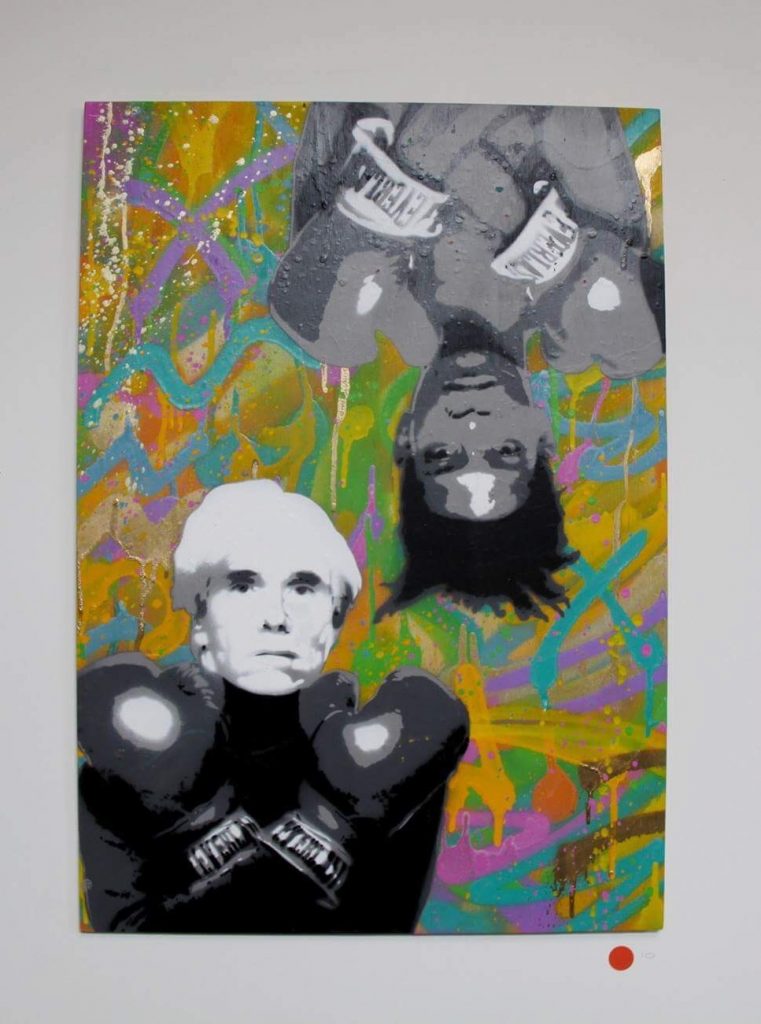
Actually I had a conversation with someone not too long ago, about how stencil artists often seem to begin by producing images of pop culture icons, and you appear to be another example of that. Why do you think that sort of imagery suits the stencil technique and aesthetic in particular?
I think it is just like photographs that are iconic and things like that that people turn into art, I think that’s why people sort of turn to that style, or at least that’s why I’ve approached it because it’s cool bringing those photos back into perspective for other people.
There’s a transformative element too when you are creating a stencil, you are essentially reducing the image and then recreating it, so there’s a different approach than a photograph…
Yeah, it’s kind of like working from the background, back to front. It’s been fun learning stencils and learning all that process and trying different things.
Any particular influences in terms of stencil techniques or the aesthetic you’ve developed?
I’ve only just really started looking at other people’s work that has influenced mine, but it has been people like Alec Monopoly and Tristan Eaton, and Rone, even though some of them aren’t stencil artists, their kind of work is what I look at and I think, that’s awesome, that’s sick. Tristan Eaton’s work is just so intricate, just the pop, that’s kind of what I look for in street art, brightening up a certain area, if that’s what you’re getting asked to do…
So your goal would be to start doing bigger walls?
Oh yeah, I’d definitely be keen to start doing some bigger pieces, it’s so much fun working on a bigger scale…
Obviously it produces a lot of challenges, and working with Joel [Hart] would help to start to overcome some of those, or at least to think about challenges that come up. What challenges has the stencil technique already thrown up and how has your mindset developed the ability to problem solve?
Even just doing the Chorus boxes, printing the stencil plates to the right size was a challenge, connecting the pieces of A3 paper to get them the exact same scale and stuff for each layer, because otherwise its gonna throw the piece out. But Joel’s taught me a lot, doing the Welles Street mural and it has been awesome kind of putting that to use in my own work, it’s been sick, it’s been so much fun.
How do you break down the process from cutting to spraying a stencil? Do you always start with the image, or is the actual technique of putting an image together in an almost mechanical approach sometimes a stylistic influence?
I love doing it because when you see the finished piece it kind of makes it worthwhile, it’s like, you spend all that time cutting, and get hand cramps and all that, when you do smaller pieces, intricate cuts like that, it is worthwhile when it comes together and starts forming a realistic image
In some ways it’s a blind faith right? You are cutting and cutting, and then, at least in the beginning, you are kind of hoping that it comes together…
Yeah, you’re cutting and it’s like, I don’t know why this piece is like this, what’s this piece going look like when it’s cut out, but when you spray it, it’s like ‘oh, I get it now’…
In one of your recent pieces, you experimented with your background layer, where it actually forms part of the central image rather than just a backdrop…
I’m experimenting with that technique because with my backgrounds they can start to look really similar, so I’ve tried to pop stuff to change it, so you know it’s still my art work, but its just different. So, I’m looking at doing a Jimi Hendrix with his suit being that kind of background pop…
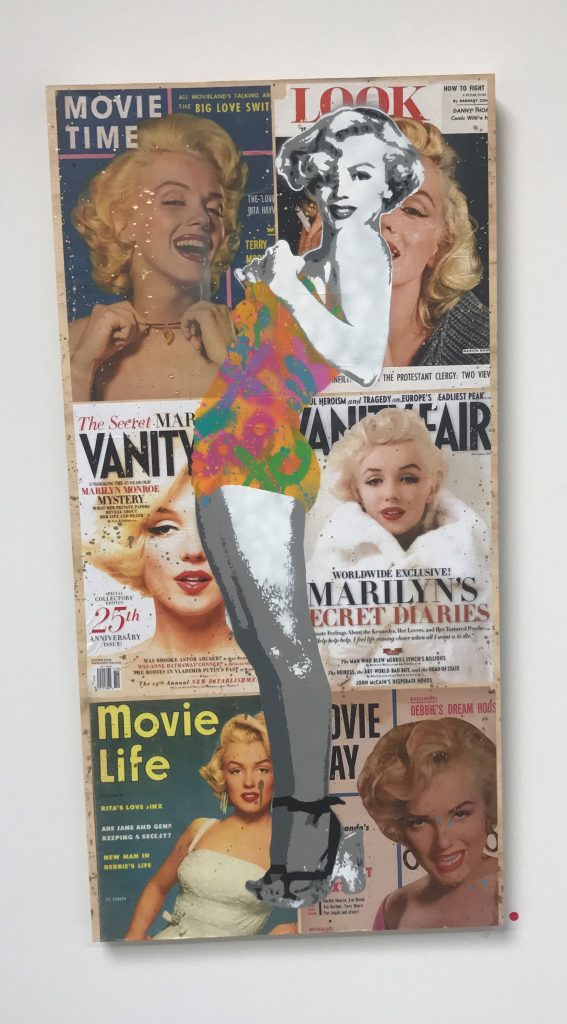
Do you know of Martin Whatson? I assume he is an influence with that approach…
Yeah, he is definitely an influence, his stuff is awesome, his prints and his street stuff, with the graffiti layering and street art style stuff over the top is definitely an influence on why I’ve gone in that direction. I’m keen to do some other pieces like that…
On a personal level, who has been particularly helpful in your development?
My parents have been the best, they’re awesome. I’ve turned Dad’s brewing shed into my studio and basically that’s where I go and spray and do all my painting and things like that. And definitely Joel, he has helped a lot. He’s such a cool guy, I’m just thankful that he has taken time to come and help me, like it’s so cool just being able to work other artists, like even going into the Welder and everybody’s like so genuine, they like what they are doing and they are happy to help other people, it’s sick.
What does the future hold for you? What are your goals and how do you see what you’re doing now progressing?
My goal would definitely be to try and turn my art into a career, I’m pretty keen to do my Bachelors (Degree) so I have a back-up if that doesn’t quite go to plan, but it’s definitely what I want to go with because I’ve started to lose a bit of interest in studies as I’ve been doing so many different projects, it’s been so much fun. But, I’m definitely keen to start doing some walls and picking up the scale.
Any plans to travel?
I’m going to Vietnam next year, so I’m pretty keen to arrange something over there while I’m going so I could do a piece there, that would be pretty sick. I’ve never done something out of Christchurch. In Venice Beach [in California] you can just go and paint the walls and things just right next to the skate park, and I’ve heard that there’s apparently this beach in Vietnam that’s the same kind of thing, same kind of situation, you can just go and anybody can paint them, so that would be pretty cool, going and chucking up a piece there…
Anything else that you want to add?
I’m loving anybody that has anything to do with my art over the last eight months or so, I just want to say thanks, its been so much fun, everybody’s been so welcoming. That’s what I’m loving about Christchurch, all the genuine people who are keen to see you keep pushing yourself…
Thanks for chatting to us
Thanks for having me…

